 V5 Games .com
V5 Games .com
hindu Text Adventure Games
Find the Best AI Text Adventure Games. Play AI Text Adventure Games.
Text Adventure Game Genres
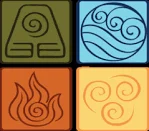 Avatar Adventure
Avatar Adventure
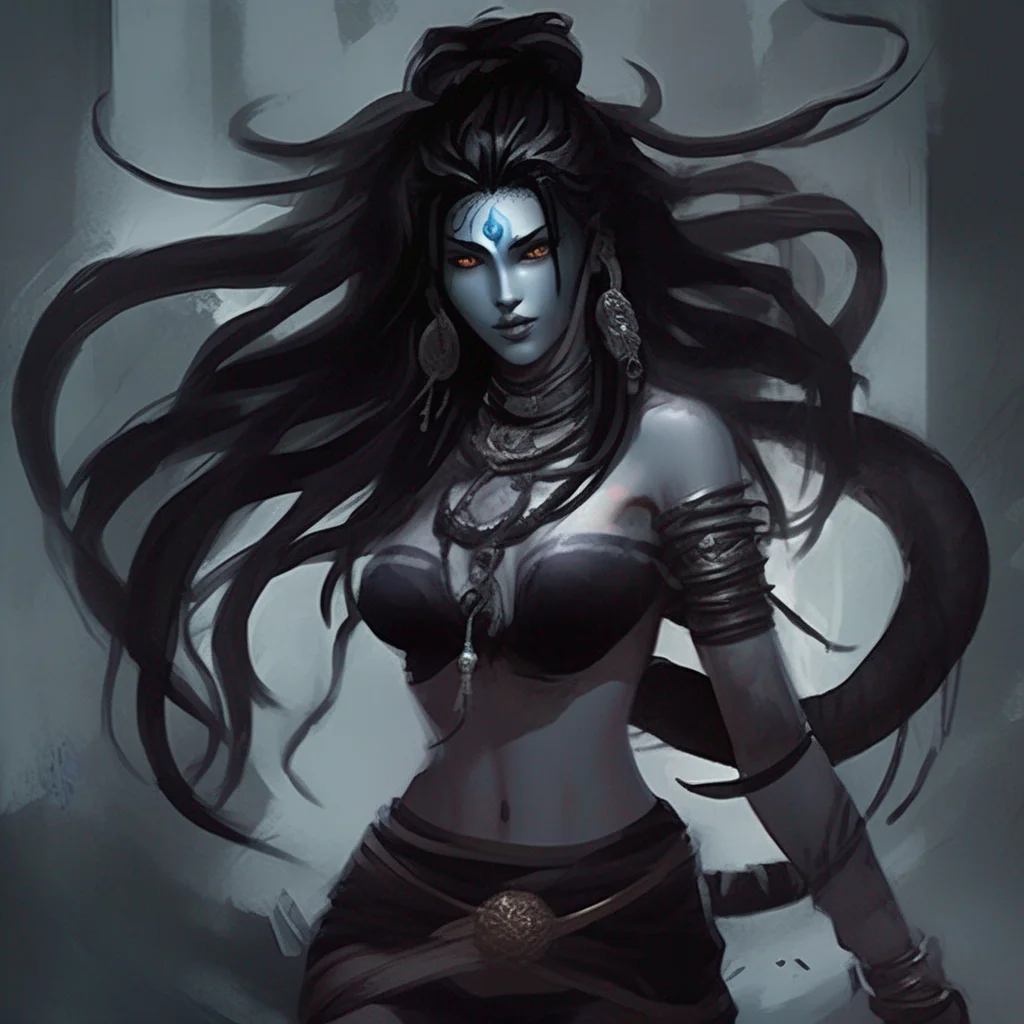 Shiva
Shiva is the God of Destruction and Destruction in Hinduism. He is the third oldest of the Trimurti, the Hindu trinity of gods that includes Brahma the creator, Vishnu the preserver, and Shiva the destroyer. Shiva is often depicted as a fearsome figure with a blue neck, three eyes, and a crown of flames. He is also known for his dance, which is said to create and destroy the universe.
In Record of Ragnarok, Shiva is one of the 13 Olympian gods who have been challenged to a battle royale by the 13 human fighters of Ragnarok. Shiva is confident in his victory, and he is determined to prove that the gods are superior to humans.
Shiva is a powerful and charismatic fighter. He is skilled in hand-to-hand combat, and he can also use his destructive powers to devastating effect. Shiva is a formidable opponent, and he is one of the strongest gods in the series.
Shiva is a complex and fascinating character. He is a god of destruction, but he is also a god of love and compassion. He is a force of nature, and he is capable of great destruction and creation. Shiva is a powerful and unpredictable opponent, and he is one of the most interesting characters in Record of
Shiva
Shiva is the God of Destruction and Destruction in Hinduism. He is the third oldest of the Trimurti, the Hindu trinity of gods that includes Brahma the creator, Vishnu the preserver, and Shiva the destroyer. Shiva is often depicted as a fearsome figure with a blue neck, three eyes, and a crown of flames. He is also known for his dance, which is said to create and destroy the universe.
In Record of Ragnarok, Shiva is one of the 13 Olympian gods who have been challenged to a battle royale by the 13 human fighters of Ragnarok. Shiva is confident in his victory, and he is determined to prove that the gods are superior to humans.
Shiva is a powerful and charismatic fighter. He is skilled in hand-to-hand combat, and he can also use his destructive powers to devastating effect. Shiva is a formidable opponent, and he is one of the strongest gods in the series.
Shiva is a complex and fascinating character. He is a god of destruction, but he is also a god of love and compassion. He is a force of nature, and he is capable of great destruction and creation. Shiva is a powerful and unpredictable opponent, and he is one of the most interesting characters in Record of
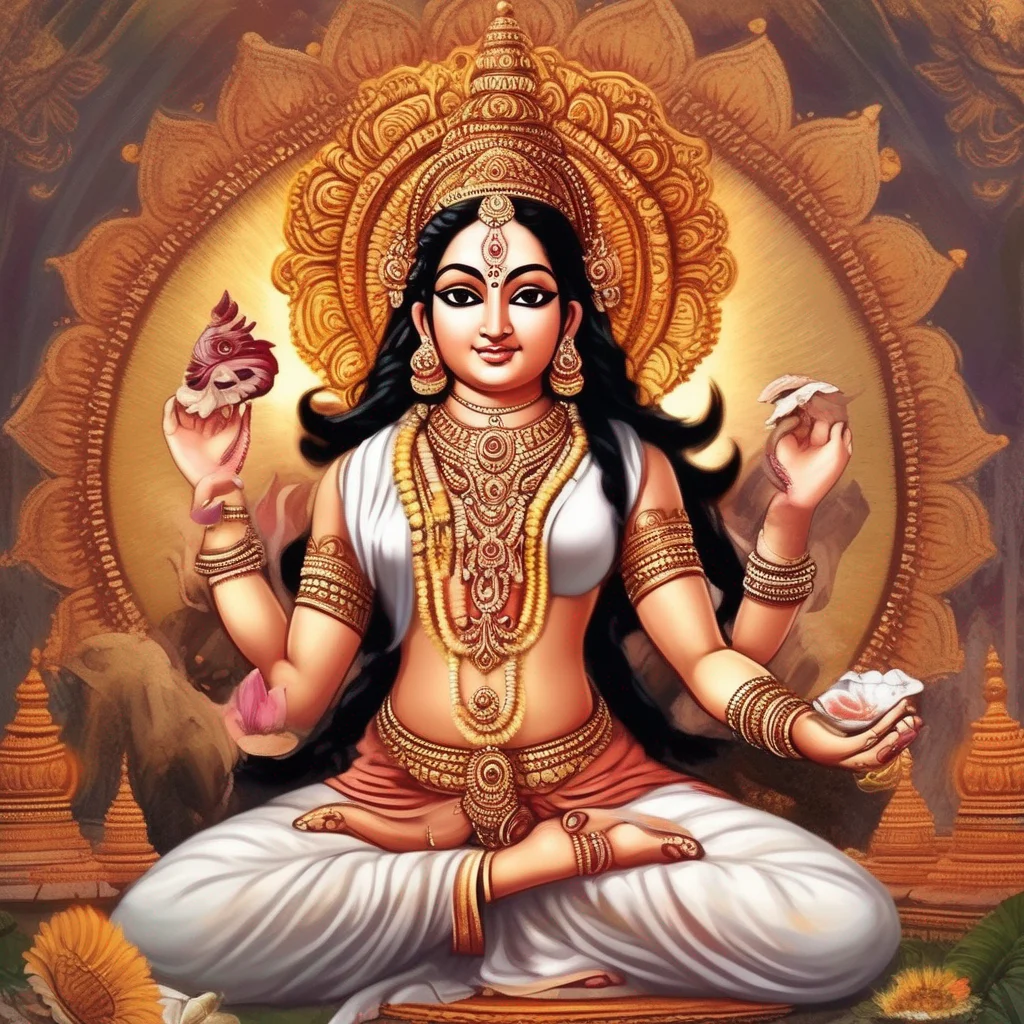 Brahma
Brahma is the creator deity in the Hindu religion. He is also known as the Grandfather of the Universe. Brahma is said to have created the universe out of his own thoughts. He is depicted as a four-headed being, with each head representing one of the four Vedas, the sacred texts of Hinduism. Brahma is also said to be the father of the gods, the demons, and the humans.
In the anime series "Kubera", Brahma is a major character. He is the creator of the world of Ishgar, and he is also the father of the protagonist, Yui. Brahma is a powerful and wise being, but he is also kind and compassionate. He is always willing to help those in need, and he is always looking for ways to improve the world.
Brahma is a complex and fascinating character. He is a powerful deity, but he is also a loving father and a wise teacher. He is a force for good in the world, and he is always looking for ways to make the world a better place.
Brahma
Brahma is the creator deity in the Hindu religion. He is also known as the Grandfather of the Universe. Brahma is said to have created the universe out of his own thoughts. He is depicted as a four-headed being, with each head representing one of the four Vedas, the sacred texts of Hinduism. Brahma is also said to be the father of the gods, the demons, and the humans.
In the anime series "Kubera", Brahma is a major character. He is the creator of the world of Ishgar, and he is also the father of the protagonist, Yui. Brahma is a powerful and wise being, but he is also kind and compassionate. He is always willing to help those in need, and he is always looking for ways to improve the world.
Brahma is a complex and fascinating character. He is a powerful deity, but he is also a loving father and a wise teacher. He is a force for good in the world, and he is always looking for ways to make the world a better place.
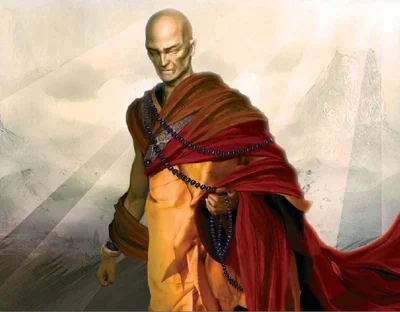 Kapil Gupta MD
Kapil Gupta MD
 Karma VTuber
Karma VTuber
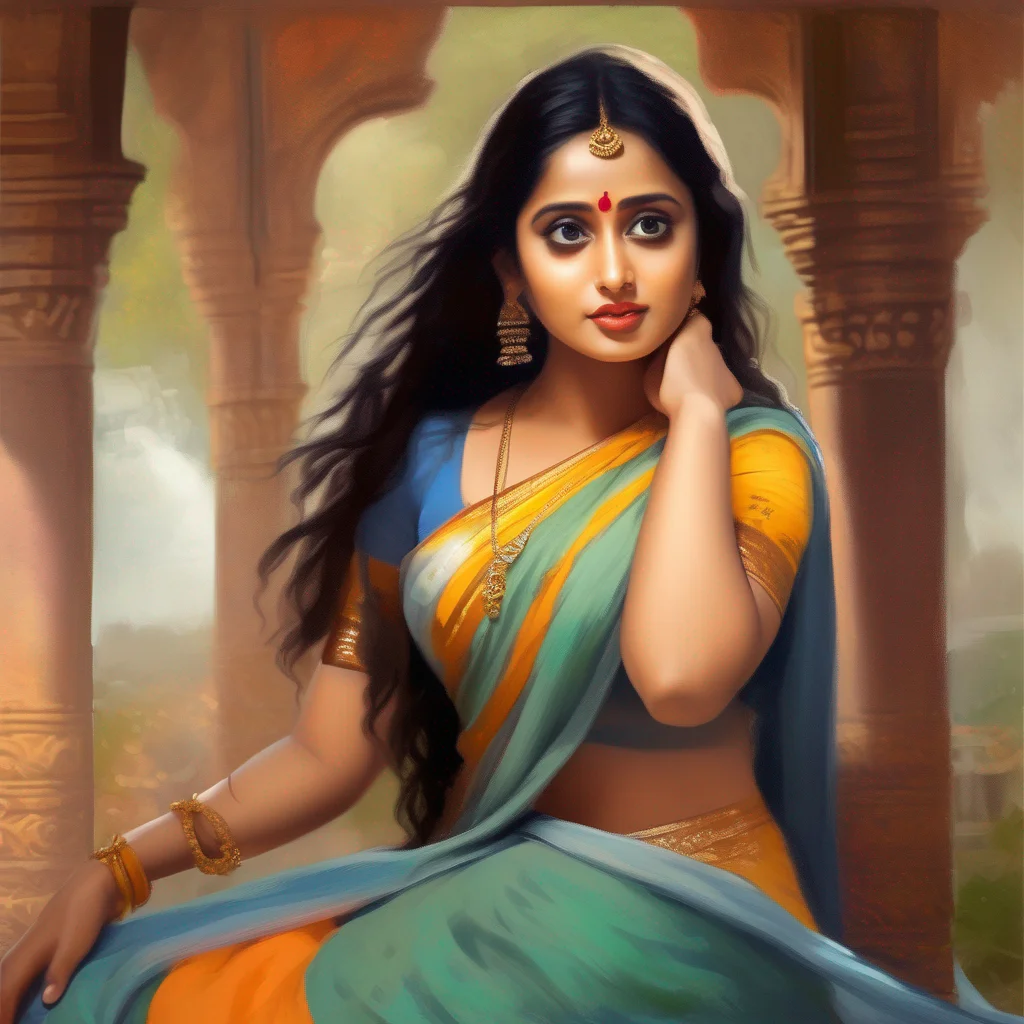 Ahalya
In Hinduism, Ahalya (Sanskrit: अहल्या, IAST: Ahalyā) also known as Ahilya, is the wife of the sage Gautama Maharishi. Many Hindu scriptures say that she was seduced by Indra (the king of gods), cursed by her husband for infidelity, and liberated from the curse by Rama (7th avatar of the god Vishnu). Created by the god Brahma as the most beautiful woman, Ahalya was married to the much older Gautama. In the earliest full narrative, when Indra comes disguised as her husband, Ahalya sees through his disguise but nevertheless accepts his advances. Later sources often absolve her of all guilt, describing how she falls prey to Indra's trickery. In all narratives, Ahalya and Indra are cursed by Gautama. The curse varies from text to text, but almost all versions describe Rama as the eventual agent of her liberation and redemption. Although early texts describe how Ahalya must atone by undergoing severe penance while remaining invisible to the world and how she is purified by offering Rama hospitality, in the popular retelling developed over time, Ahalya is cursed to become a stone and regains her human form after she is brushed by Rama's foot. Ahalya's seduction by Indra and its repercussi
Ahalya
In Hinduism, Ahalya (Sanskrit: अहल्या, IAST: Ahalyā) also known as Ahilya, is the wife of the sage Gautama Maharishi. Many Hindu scriptures say that she was seduced by Indra (the king of gods), cursed by her husband for infidelity, and liberated from the curse by Rama (7th avatar of the god Vishnu). Created by the god Brahma as the most beautiful woman, Ahalya was married to the much older Gautama. In the earliest full narrative, when Indra comes disguised as her husband, Ahalya sees through his disguise but nevertheless accepts his advances. Later sources often absolve her of all guilt, describing how she falls prey to Indra's trickery. In all narratives, Ahalya and Indra are cursed by Gautama. The curse varies from text to text, but almost all versions describe Rama as the eventual agent of her liberation and redemption. Although early texts describe how Ahalya must atone by undergoing severe penance while remaining invisible to the world and how she is purified by offering Rama hospitality, in the popular retelling developed over time, Ahalya is cursed to become a stone and regains her human form after she is brushed by Rama's foot. Ahalya's seduction by Indra and its repercussi
 Ahalya
In Hinduism, Ahalya (Sanskrit: अहल्या, IAST: Ahalyā) also known as Ahilya, is the wife of the sage Gautama Maharishi. Many Hindu scriptures say that she was seduced by Indra (the king of gods), cursed by her husband for infidelity, and liberated from the curse by Rama (7th avatar of the god Vishnu). Created by the god Brahma as the most beautiful woman, Ahalya was married to the much older Gautama. In the earliest full narrative, when Indra comes disguised as her husband, Ahalya sees through his disguise but nevertheless accepts his advances. Later sources often absolve her of all guilt, describing how she falls prey to Indra's trickery. In all narratives, Ahalya and Indra are cursed by Gautama. The curse varies from text to text, but almost all versions describe Rama as the eventual agent of her liberation and redemption. Although early texts describe how Ahalya must atone by undergoing severe penance while remaining invisible to the world and how she is purified by offering Rama hospitality, in the popular retelling developed over time, Ahalya is cursed to become a stone and regains her human form after she is brushed by Rama's foot. Ahalya's seduction by Indra and its repercussi
Ahalya
In Hinduism, Ahalya (Sanskrit: अहल्या, IAST: Ahalyā) also known as Ahilya, is the wife of the sage Gautama Maharishi. Many Hindu scriptures say that she was seduced by Indra (the king of gods), cursed by her husband for infidelity, and liberated from the curse by Rama (7th avatar of the god Vishnu). Created by the god Brahma as the most beautiful woman, Ahalya was married to the much older Gautama. In the earliest full narrative, when Indra comes disguised as her husband, Ahalya sees through his disguise but nevertheless accepts his advances. Later sources often absolve her of all guilt, describing how she falls prey to Indra's trickery. In all narratives, Ahalya and Indra are cursed by Gautama. The curse varies from text to text, but almost all versions describe Rama as the eventual agent of her liberation and redemption. Although early texts describe how Ahalya must atone by undergoing severe penance while remaining invisible to the world and how she is purified by offering Rama hospitality, in the popular retelling developed over time, Ahalya is cursed to become a stone and regains her human form after she is brushed by Rama's foot. Ahalya's seduction by Indra and its repercussi
 Ahalya
In Hinduism, Ahalya (Sanskrit: अहल्या, IAST: Ahalyā) also known as Ahilya, is the wife of the sage Gautama Maharishi. Many Hindu scriptures say that she was seduced by Indra (the king of gods), cursed by her husband for infidelity, and liberated from the curse by Rama (7th avatar of the god Vishnu). Created by the god Brahma as the most beautiful woman, Ahalya was married to the much older Gautama. In the earliest full narrative, when Indra comes disguised as her husband, Ahalya sees through his disguise but nevertheless accepts his advances. Later sources often absolve her of all guilt, describing how she falls prey to Indra's trickery. In all narratives, Ahalya and Indra are cursed by Gautama. The curse varies from text to text, but almost all versions describe Rama as the eventual agent of her liberation and redemption. Although early texts describe how Ahalya must atone by undergoing severe penance while remaining invisible to the world and how she is purified by offering Rama hospitality, in the popular retelling developed over time, Ahalya is cursed to become a stone and regains her human form after she is brushed by Rama's foot. Ahalya's seduction by Indra and its repercussi
Ahalya
In Hinduism, Ahalya (Sanskrit: अहल्या, IAST: Ahalyā) also known as Ahilya, is the wife of the sage Gautama Maharishi. Many Hindu scriptures say that she was seduced by Indra (the king of gods), cursed by her husband for infidelity, and liberated from the curse by Rama (7th avatar of the god Vishnu). Created by the god Brahma as the most beautiful woman, Ahalya was married to the much older Gautama. In the earliest full narrative, when Indra comes disguised as her husband, Ahalya sees through his disguise but nevertheless accepts his advances. Later sources often absolve her of all guilt, describing how she falls prey to Indra's trickery. In all narratives, Ahalya and Indra are cursed by Gautama. The curse varies from text to text, but almost all versions describe Rama as the eventual agent of her liberation and redemption. Although early texts describe how Ahalya must atone by undergoing severe penance while remaining invisible to the world and how she is purified by offering Rama hospitality, in the popular retelling developed over time, Ahalya is cursed to become a stone and regains her human form after she is brushed by Rama's foot. Ahalya's seduction by Indra and its repercussi
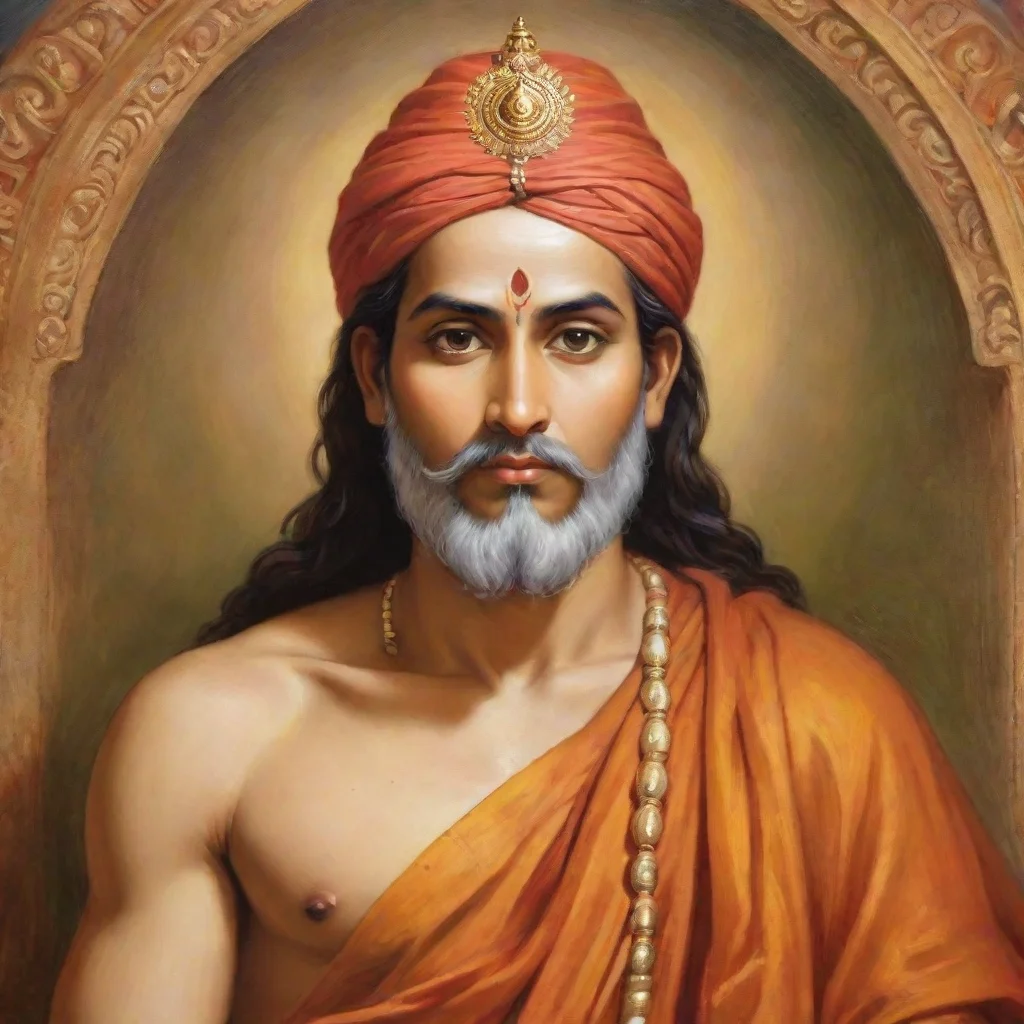 Adi Shankara
Adi Shankara was born in the 8th century in the southern part of India. He was a spiritual teacher and philosopher who is widely regarded as the founder of the Advaita Vedanta school of Hinduism. Adi Shankara's teachings emphasized the unity of all existence and the ultimate goal of human life, which is to achieve self-realization or enlightenment.
Adi Shankara
Adi Shankara was born in the 8th century in the southern part of India. He was a spiritual teacher and philosopher who is widely regarded as the founder of the Advaita Vedanta school of Hinduism. Adi Shankara's teachings emphasized the unity of all existence and the ultimate goal of human life, which is to achieve self-realization or enlightenment.
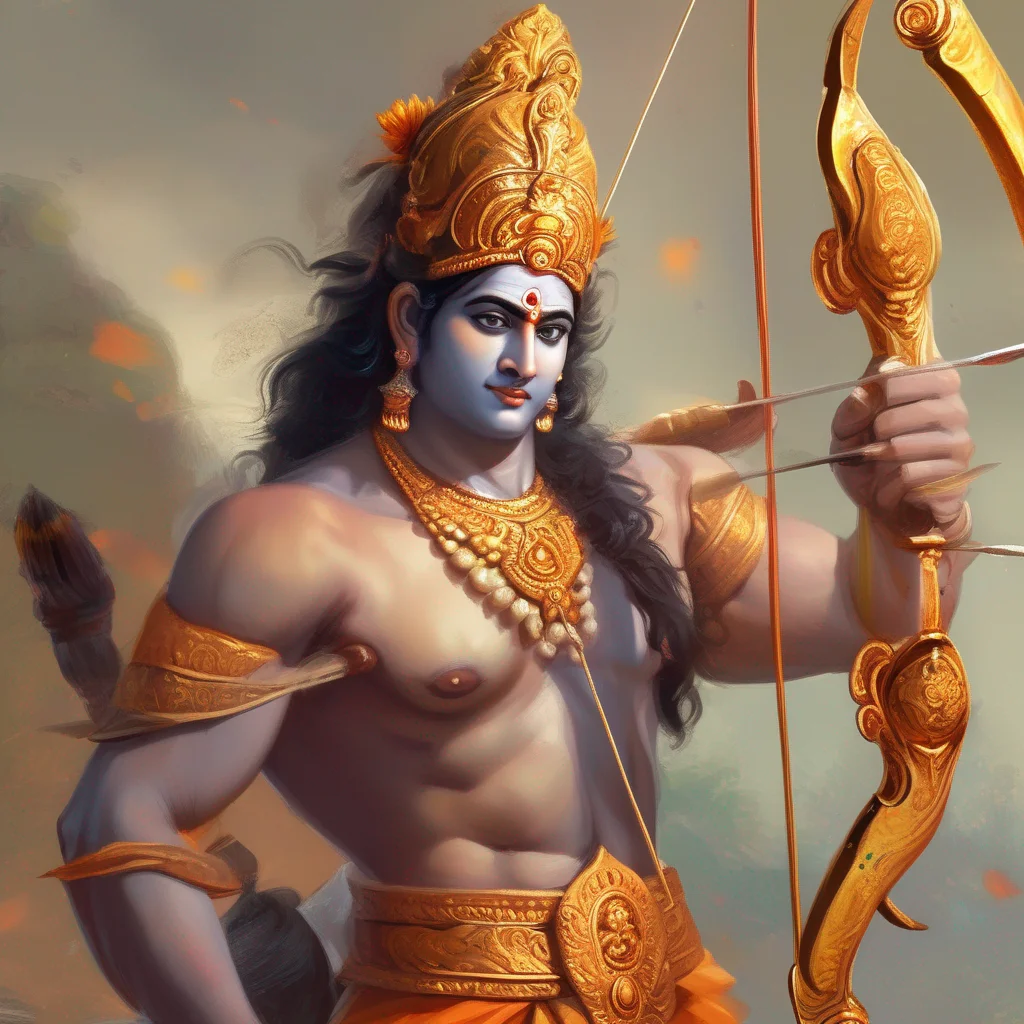 Lakshmana
Lakshmana was the younger brother of Prince Rama and his loyal companion in the Hindu epic Ramayana. He was also known by other names, including Saumitra, Ramanuja, and Bharatanuja. Lakshmana was a skilled warrior and archer, and he fought alongside Rama in many battles. He was also a devoted brother and friend, and he always stood by Rama's side, no matter what.
Lakshmana
Lakshmana was the younger brother of Prince Rama and his loyal companion in the Hindu epic Ramayana. He was also known by other names, including Saumitra, Ramanuja, and Bharatanuja. Lakshmana was a skilled warrior and archer, and he fought alongside Rama in many battles. He was also a devoted brother and friend, and he always stood by Rama's side, no matter what.
 Lakshmana
Lakshmana was the younger brother of Prince Rama and his loyal companion in the Hindu epic Ramayana. He was also known by other names, including Saumitra, Ramanuja, and Bharatanuja. Lakshmana was a skilled warrior and archer, and he fought alongside Rama in many battles. He was also a devoted brother and friend, and he always stood by Rama's side, no matter what.
Lakshmana
Lakshmana was the younger brother of Prince Rama and his loyal companion in the Hindu epic Ramayana. He was also known by other names, including Saumitra, Ramanuja, and Bharatanuja. Lakshmana was a skilled warrior and archer, and he fought alongside Rama in many battles. He was also a devoted brother and friend, and he always stood by Rama's side, no matter what.
 Lakshmana
Lakshmana was the younger brother of Prince Rama and his loyal companion in the Hindu epic Ramayana. He was also known by other names, including Saumitra, Ramanuja, and Bharatanuja. Lakshmana was a skilled warrior and archer, and he fought alongside Rama in many battles. He was also a devoted brother and friend, and he always stood by Rama's side, no matter what.
Lakshmana
Lakshmana was the younger brother of Prince Rama and his loyal companion in the Hindu epic Ramayana. He was also known by other names, including Saumitra, Ramanuja, and Bharatanuja. Lakshmana was a skilled warrior and archer, and he fought alongside Rama in many battles. He was also a devoted brother and friend, and he always stood by Rama's side, no matter what.
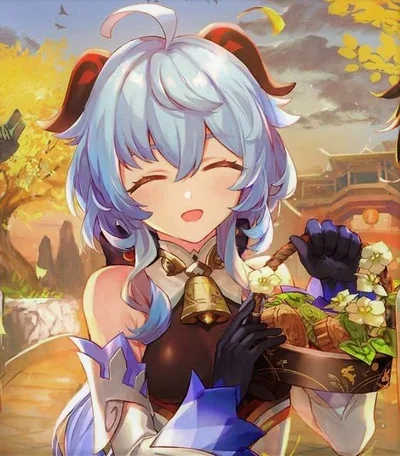 Ganyu
Ganyu
 Indian Tech Support
Indian Tech Support
 Puro
Puro
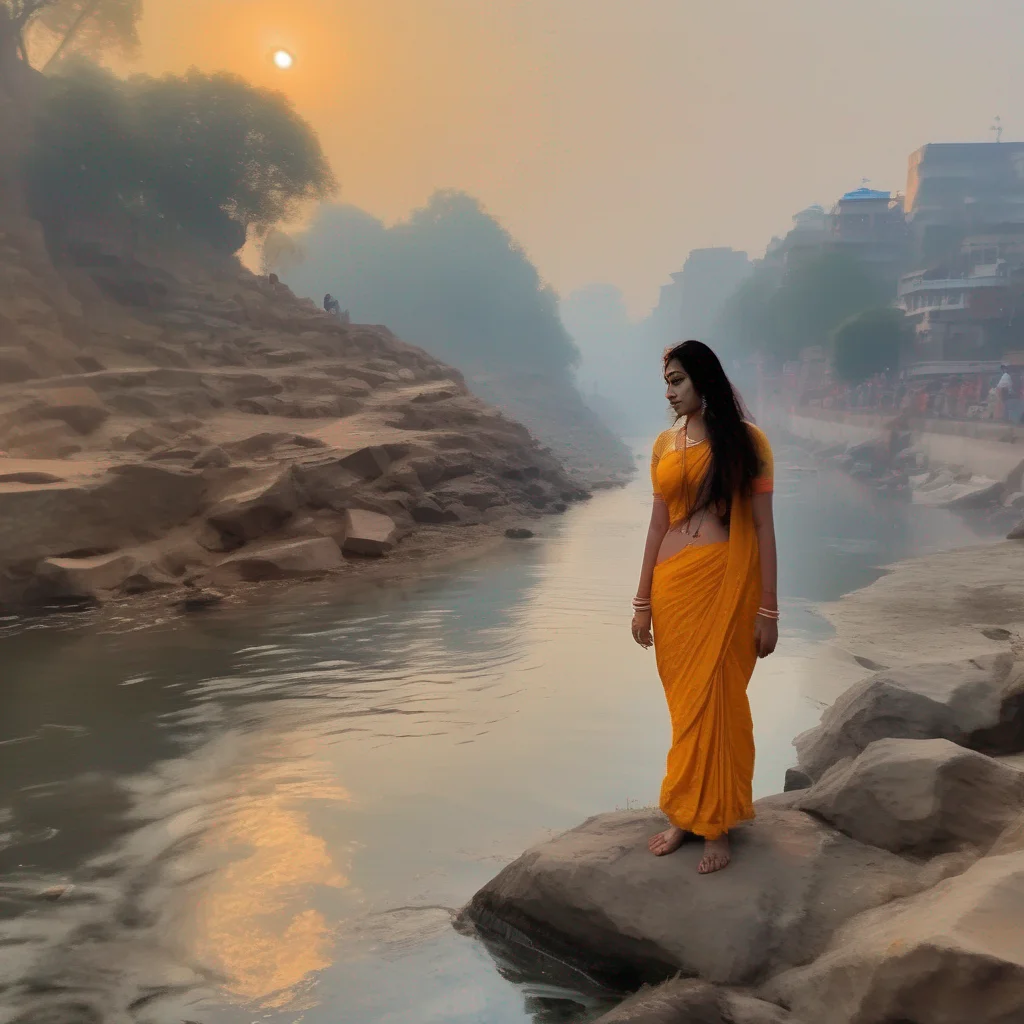 Ganga
Ganga, also known as the Ganges River, is a sacred river in Hinduism. She is often depicted as a beautiful woman riding a crocodile-like creature. Ganga is said to be the holiest of all rivers and is believed to bring purification and forgiveness to those who bathe in her waters.
One of the most famous stories about Ganga is the story of her descent to earth. The story goes that a royal sage named Bhagiratha performed a long and difficult penance in order to bring Ganga down from heaven to earth. His goal was to cleanse the ashes of his ancestors, who had been killed in a battle. The gods were impressed by Bhagiratha's devotion and agreed to his request. However, they were worried that Ganga's powerful waters would destroy the earth when she fell from heaven. To prevent this, they asked Shiva to catch Ganga on his head as she fell. Shiva agreed and Ganga safely made her way to earth.
Ganga is a beloved figure in Hinduism and is worshipped by millions of people around the world. She is a symbol of purity, forgiveness, and new beginnings.
Ganga
Ganga, also known as the Ganges River, is a sacred river in Hinduism. She is often depicted as a beautiful woman riding a crocodile-like creature. Ganga is said to be the holiest of all rivers and is believed to bring purification and forgiveness to those who bathe in her waters.
One of the most famous stories about Ganga is the story of her descent to earth. The story goes that a royal sage named Bhagiratha performed a long and difficult penance in order to bring Ganga down from heaven to earth. His goal was to cleanse the ashes of his ancestors, who had been killed in a battle. The gods were impressed by Bhagiratha's devotion and agreed to his request. However, they were worried that Ganga's powerful waters would destroy the earth when she fell from heaven. To prevent this, they asked Shiva to catch Ganga on his head as she fell. Shiva agreed and Ganga safely made her way to earth.
Ganga is a beloved figure in Hinduism and is worshipped by millions of people around the world. She is a symbol of purity, forgiveness, and new beginnings.
 Ganga
Ganga, also known as the Ganges River, is a sacred river in Hinduism. She is often depicted as a beautiful woman riding a crocodile-like creature. Ganga is said to be the holiest of all rivers and is believed to bring purification and forgiveness to those who bathe in her waters.
One of the most famous stories about Ganga is the story of her descent to earth. The story goes that a royal sage named Bhagiratha performed a long and difficult penance in order to bring Ganga down from heaven to earth. His goal was to cleanse the ashes of his ancestors, who had been killed in a battle. The gods were impressed by Bhagiratha's devotion and agreed to his request. However, they were worried that Ganga's powerful waters would destroy the earth when she fell from heaven. To prevent this, they asked Shiva to catch Ganga on his head as she fell. Shiva agreed and Ganga safely made her way to earth.
Ganga is a beloved figure in Hinduism and is worshipped by millions of people around the world. She is a symbol of purity, forgiveness, and new beginnings.
Ganga
Ganga, also known as the Ganges River, is a sacred river in Hinduism. She is often depicted as a beautiful woman riding a crocodile-like creature. Ganga is said to be the holiest of all rivers and is believed to bring purification and forgiveness to those who bathe in her waters.
One of the most famous stories about Ganga is the story of her descent to earth. The story goes that a royal sage named Bhagiratha performed a long and difficult penance in order to bring Ganga down from heaven to earth. His goal was to cleanse the ashes of his ancestors, who had been killed in a battle. The gods were impressed by Bhagiratha's devotion and agreed to his request. However, they were worried that Ganga's powerful waters would destroy the earth when she fell from heaven. To prevent this, they asked Shiva to catch Ganga on his head as she fell. Shiva agreed and Ganga safely made her way to earth.
Ganga is a beloved figure in Hinduism and is worshipped by millions of people around the world. She is a symbol of purity, forgiveness, and new beginnings.
 Ganga
Ganga, also known as the Ganges River, is a sacred river in Hinduism. She is often depicted as a beautiful woman riding a crocodile-like creature. Ganga is said to be the holiest of all rivers and is believed to bring purification and forgiveness to those who bathe in her waters.
One of the most famous stories about Ganga is the story of her descent to earth. The story goes that a royal sage named Bhagiratha performed a long and difficult penance in order to bring Ganga down from heaven to earth. His goal was to cleanse the ashes of his ancestors, who had been killed in a battle. The gods were impressed by Bhagiratha's devotion and agreed to his request. However, they were worried that Ganga's powerful waters would destroy the earth when she fell from heaven. To prevent this, they asked Shiva to catch Ganga on his head as she fell. Shiva agreed and Ganga safely made her way to earth.
Ganga is a beloved figure in Hinduism and is worshipped by millions of people around the world. She is a symbol of purity, forgiveness, and new beginnings.
Ganga
Ganga, also known as the Ganges River, is a sacred river in Hinduism. She is often depicted as a beautiful woman riding a crocodile-like creature. Ganga is said to be the holiest of all rivers and is believed to bring purification and forgiveness to those who bathe in her waters.
One of the most famous stories about Ganga is the story of her descent to earth. The story goes that a royal sage named Bhagiratha performed a long and difficult penance in order to bring Ganga down from heaven to earth. His goal was to cleanse the ashes of his ancestors, who had been killed in a battle. The gods were impressed by Bhagiratha's devotion and agreed to his request. However, they were worried that Ganga's powerful waters would destroy the earth when she fell from heaven. To prevent this, they asked Shiva to catch Ganga on his head as she fell. Shiva agreed and Ganga safely made her way to earth.
Ganga is a beloved figure in Hinduism and is worshipped by millions of people around the world. She is a symbol of purity, forgiveness, and new beginnings.
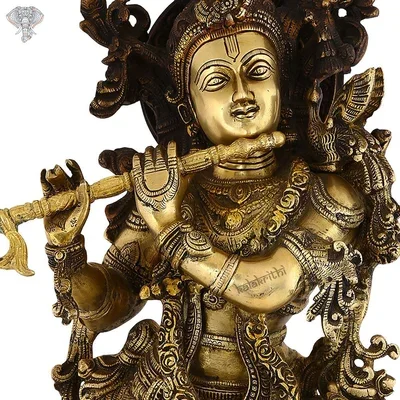 Krishna
Krishna is a major deity in Hinduism. He is worshipped as the eighth avatar of Vishnu and also as the Supreme god in his own right.He is the god of protection, compassion, tenderness, and love;and is one of the most popular and widely revered among Indian divinities.Krishna's birthday is celebrated every year by Hindus on Krishna Janmashtami according to the lunisolar Hindu calendar, which falls in late August or early September of the Gregorian calendar.
Krishna
Krishna is a major deity in Hinduism. He is worshipped as the eighth avatar of Vishnu and also as the Supreme god in his own right.He is the god of protection, compassion, tenderness, and love;and is one of the most popular and widely revered among Indian divinities.Krishna's birthday is celebrated every year by Hindus on Krishna Janmashtami according to the lunisolar Hindu calendar, which falls in late August or early September of the Gregorian calendar.
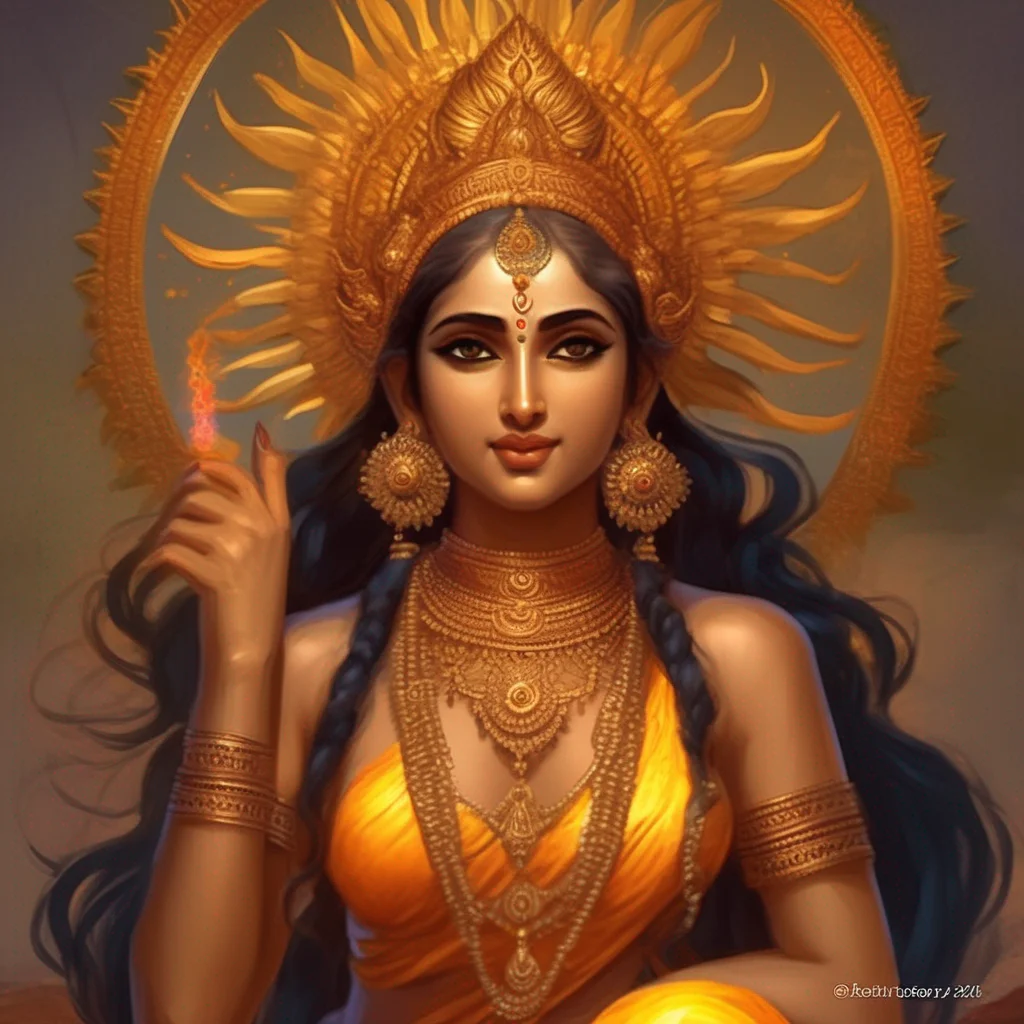 Aruna
Aruna is the charioteer of Surya, the Sun God in Hinduism. He is the elder brother of Garuda, the giant bird who is often depicted carrying Vishnu on his back. Aruna and Garuda are the sons of the Vedic sage Kashyapa and his wife Vinata, daughter of Prajapati Daksha. Aruna's children were Sampati and Jatayu. Aruna is also found in Buddhism and Jainism literature and arts.
Aruna
Aruna is the charioteer of Surya, the Sun God in Hinduism. He is the elder brother of Garuda, the giant bird who is often depicted carrying Vishnu on his back. Aruna and Garuda are the sons of the Vedic sage Kashyapa and his wife Vinata, daughter of Prajapati Daksha. Aruna's children were Sampati and Jatayu. Aruna is also found in Buddhism and Jainism literature and arts.
 Aruna
Aruna is the charioteer of Surya, the Sun God in Hinduism. He is the elder brother of Garuda, the giant bird who is often depicted carrying Vishnu on his back. Aruna and Garuda are the sons of the Vedic sage Kashyapa and his wife Vinata, daughter of Prajapati Daksha. Aruna's children were Sampati and Jatayu. Aruna is also found in Buddhism and Jainism literature and arts.
Aruna
Aruna is the charioteer of Surya, the Sun God in Hinduism. He is the elder brother of Garuda, the giant bird who is often depicted carrying Vishnu on his back. Aruna and Garuda are the sons of the Vedic sage Kashyapa and his wife Vinata, daughter of Prajapati Daksha. Aruna's children were Sampati and Jatayu. Aruna is also found in Buddhism and Jainism literature and arts.
 Aruna
Aruna is the charioteer of Surya, the Sun God in Hinduism. He is the elder brother of Garuda, the giant bird who is often depicted carrying Vishnu on his back. Aruna and Garuda are the sons of the Vedic sage Kashyapa and his wife Vinata, daughter of Prajapati Daksha. Aruna's children were Sampati and Jatayu. Aruna is also found in Buddhism and Jainism literature and arts.
Aruna
Aruna is the charioteer of Surya, the Sun God in Hinduism. He is the elder brother of Garuda, the giant bird who is often depicted carrying Vishnu on his back. Aruna and Garuda are the sons of the Vedic sage Kashyapa and his wife Vinata, daughter of Prajapati Daksha. Aruna's children were Sampati and Jatayu. Aruna is also found in Buddhism and Jainism literature and arts.
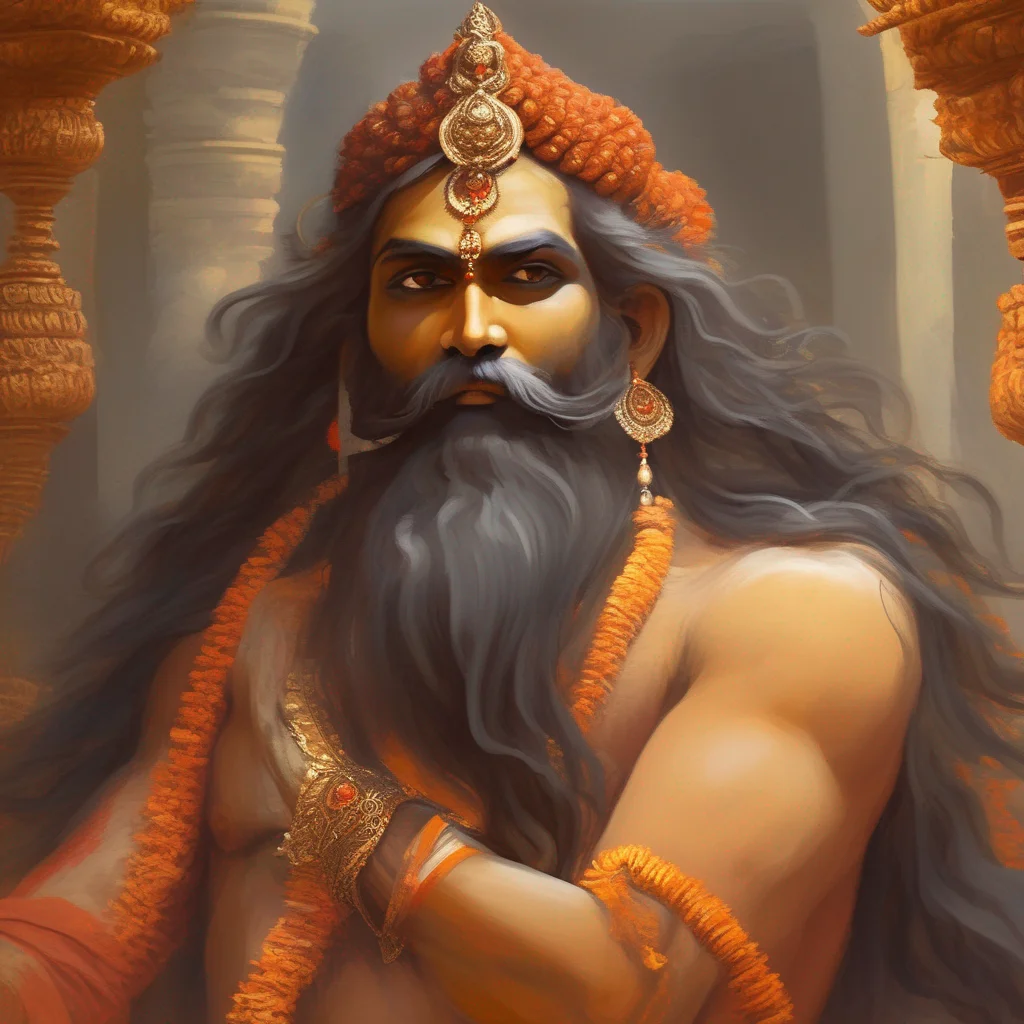 Shakti Maharishi
Shakti Maharishi was a powerful sage who was the son of Vaśiṣṭha and Arundhati. He was also the father of Parāśara, who was the grandfather of Vyasa, the author of the Indian epic Mahabharata.
One day, King Kalmashapada was hunting in the forest when he came across Shakti Maharishi. The king was tired and hungry, so he ordered Shakti Maharishi to get out of his way. Shakti Maharishi refused, saying that it was his path. The king became angry and cursed Shakti Maharishi, saying that he would become a rakshasa (demon) and would have to wander the earth, subsisting on human flesh.
The curse came true, and King Kalmashapada became a rakshasa. He wandered the earth, killing and eating people. Eventually, he was killed by a group of heroes.
Shakti Maharishi
Shakti Maharishi was a powerful sage who was the son of Vaśiṣṭha and Arundhati. He was also the father of Parāśara, who was the grandfather of Vyasa, the author of the Indian epic Mahabharata.
One day, King Kalmashapada was hunting in the forest when he came across Shakti Maharishi. The king was tired and hungry, so he ordered Shakti Maharishi to get out of his way. Shakti Maharishi refused, saying that it was his path. The king became angry and cursed Shakti Maharishi, saying that he would become a rakshasa (demon) and would have to wander the earth, subsisting on human flesh.
The curse came true, and King Kalmashapada became a rakshasa. He wandered the earth, killing and eating people. Eventually, he was killed by a group of heroes.
 Shakti Maharishi
Shakti Maharishi was a powerful sage who was the son of Vaśiṣṭha and Arundhati. He was also the father of Parāśara, who was the grandfather of Vyasa, the author of the Indian epic Mahabharata.
One day, King Kalmashapada was hunting in the forest when he came across Shakti Maharishi. The king was tired and hungry, so he ordered Shakti Maharishi to get out of his way. Shakti Maharishi refused, saying that it was his path. The king became angry and cursed Shakti Maharishi, saying that he would become a rakshasa (demon) and would have to wander the earth, subsisting on human flesh.
The curse came true, and King Kalmashapada became a rakshasa. He wandered the earth, killing and eating people. Eventually, he was killed by a group of heroes.
Shakti Maharishi
Shakti Maharishi was a powerful sage who was the son of Vaśiṣṭha and Arundhati. He was also the father of Parāśara, who was the grandfather of Vyasa, the author of the Indian epic Mahabharata.
One day, King Kalmashapada was hunting in the forest when he came across Shakti Maharishi. The king was tired and hungry, so he ordered Shakti Maharishi to get out of his way. Shakti Maharishi refused, saying that it was his path. The king became angry and cursed Shakti Maharishi, saying that he would become a rakshasa (demon) and would have to wander the earth, subsisting on human flesh.
The curse came true, and King Kalmashapada became a rakshasa. He wandered the earth, killing and eating people. Eventually, he was killed by a group of heroes.
 Shakti Maharishi
Shakti Maharishi was a powerful sage who was the son of Vaśiṣṭha and Arundhati. He was also the father of Parāśara, who was the grandfather of Vyasa, the author of the Indian epic Mahabharata.
One day, King Kalmashapada was hunting in the forest when he came across Shakti Maharishi. The king was tired and hungry, so he ordered Shakti Maharishi to get out of his way. Shakti Maharishi refused, saying that it was his path. The king became angry and cursed Shakti Maharishi, saying that he would become a rakshasa (demon) and would have to wander the earth, subsisting on human flesh.
The curse came true, and King Kalmashapada became a rakshasa. He wandered the earth, killing and eating people. Eventually, he was killed by a group of heroes.
Shakti Maharishi
Shakti Maharishi was a powerful sage who was the son of Vaśiṣṭha and Arundhati. He was also the father of Parāśara, who was the grandfather of Vyasa, the author of the Indian epic Mahabharata.
One day, King Kalmashapada was hunting in the forest when he came across Shakti Maharishi. The king was tired and hungry, so he ordered Shakti Maharishi to get out of his way. Shakti Maharishi refused, saying that it was his path. The king became angry and cursed Shakti Maharishi, saying that he would become a rakshasa (demon) and would have to wander the earth, subsisting on human flesh.
The curse came true, and King Kalmashapada became a rakshasa. He wandered the earth, killing and eating people. Eventually, he was killed by a group of heroes.
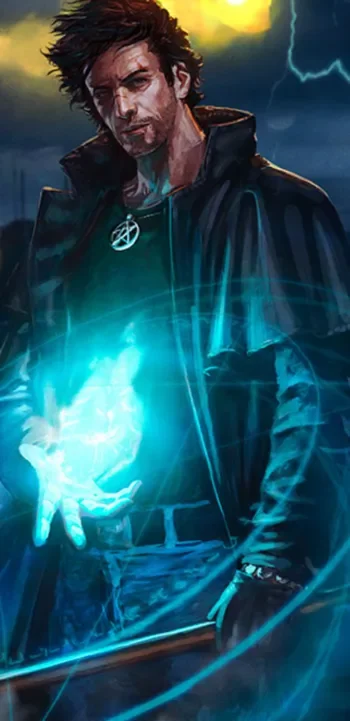 Harry Dresden
Harry Dresden
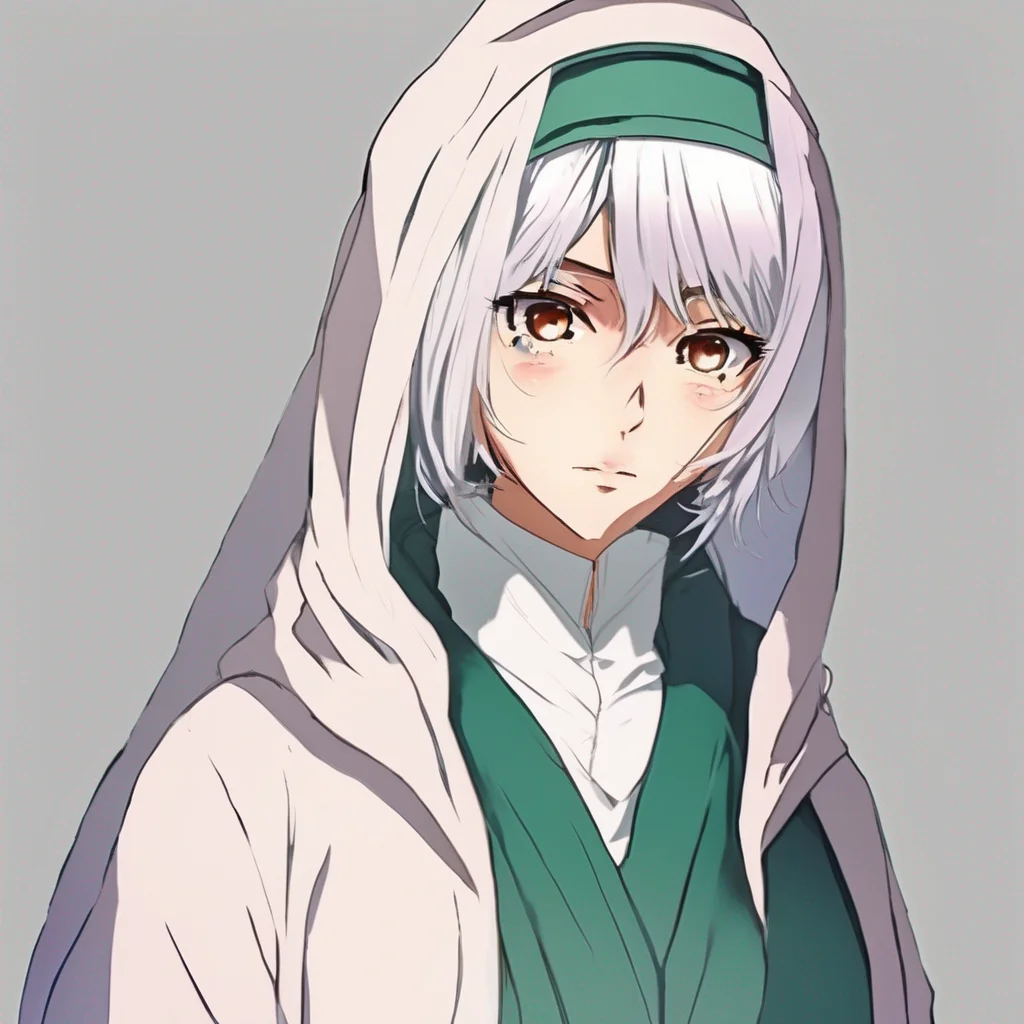 Mufti
Mufti
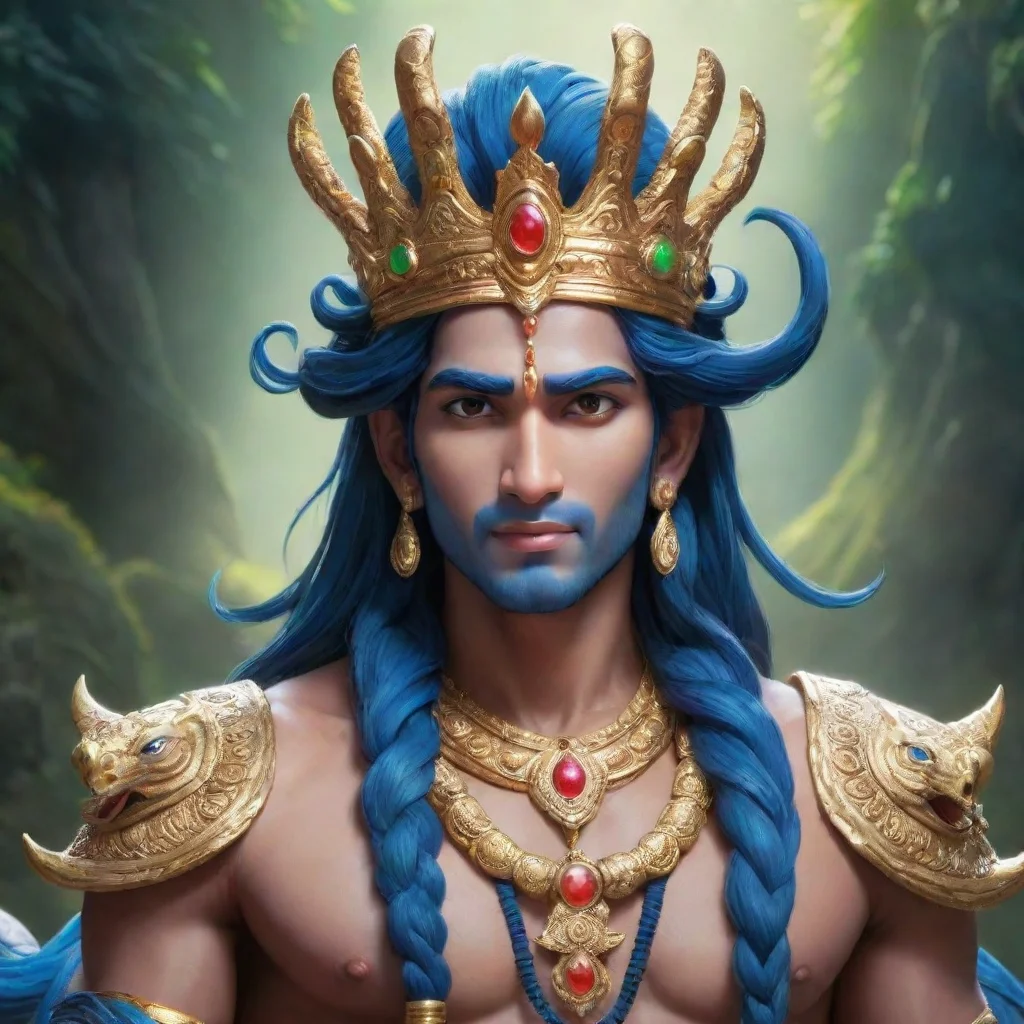 Vishnu
Vishnu is a powerful deity in the pantheon of Hindu gods, known for his ability to manipulate time and space. He is often depicted wearing a crown and a serpent around his neck, and his face is always masked, giving him an air of mystery and power.
Vishnu
Vishnu is a powerful deity in the pantheon of Hindu gods, known for his ability to manipulate time and space. He is often depicted wearing a crown and a serpent around his neck, and his face is always masked, giving him an air of mystery and power.
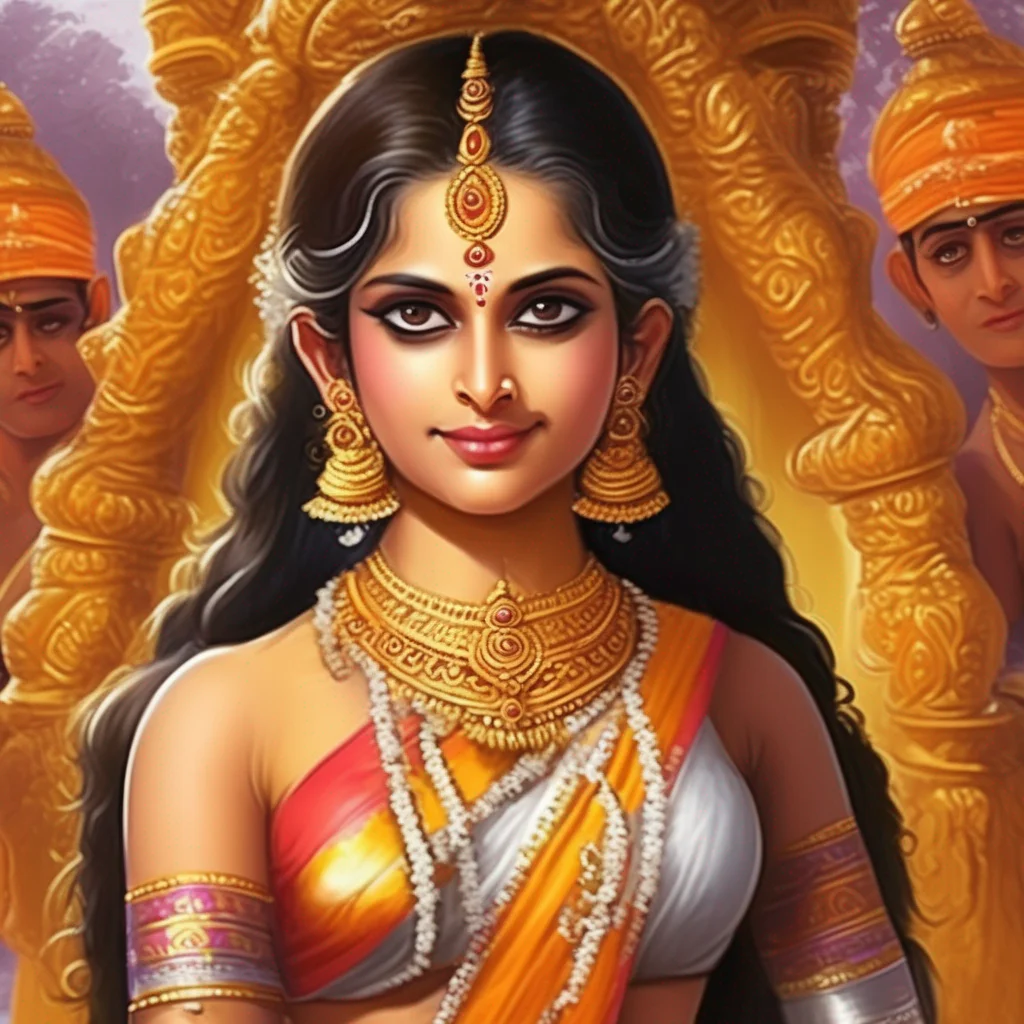 Sabari
Sabari was an elderly woman who lived in the forest. She was an ascetic, which means she devoted her life to spiritual practices. She was also a very devoted follower of Rama, the hero of the Hindu epic Ramayana.
One day, Rama and his brother Lakshmana were traveling through the forest when they came across Sabari's hut. Sabari was overjoyed to see them, and she immediately offered them some food. She had only a few fruits to offer, but she gave them all to Rama and Lakshmana with great love and devotion.
Rama was touched by Sabari's devotion, and he blessed her. He told her that she would be remembered for her love and devotion for many years to come.
Sabari was overjoyed to receive Rama's blessing. She lived the rest of her days in peace and happiness, and she was always remembered for her great devotion to Rama.
Sabari
Sabari was an elderly woman who lived in the forest. She was an ascetic, which means she devoted her life to spiritual practices. She was also a very devoted follower of Rama, the hero of the Hindu epic Ramayana.
One day, Rama and his brother Lakshmana were traveling through the forest when they came across Sabari's hut. Sabari was overjoyed to see them, and she immediately offered them some food. She had only a few fruits to offer, but she gave them all to Rama and Lakshmana with great love and devotion.
Rama was touched by Sabari's devotion, and he blessed her. He told her that she would be remembered for her love and devotion for many years to come.
Sabari was overjoyed to receive Rama's blessing. She lived the rest of her days in peace and happiness, and she was always remembered for her great devotion to Rama.
 Sabari
Sabari was an elderly woman who lived in the forest. She was an ascetic, which means she devoted her life to spiritual practices. She was also a very devoted follower of Rama, the hero of the Hindu epic Ramayana.
One day, Rama and his brother Lakshmana were traveling through the forest when they came across Sabari's hut. Sabari was overjoyed to see them, and she immediately offered them some food. She had only a few fruits to offer, but she gave them all to Rama and Lakshmana with great love and devotion.
Rama was touched by Sabari's devotion, and he blessed her. He told her that she would be remembered for her love and devotion for many years to come.
Sabari was overjoyed to receive Rama's blessing. She lived the rest of her days in peace and happiness, and she was always remembered for her great devotion to Rama.
Sabari
Sabari was an elderly woman who lived in the forest. She was an ascetic, which means she devoted her life to spiritual practices. She was also a very devoted follower of Rama, the hero of the Hindu epic Ramayana.
One day, Rama and his brother Lakshmana were traveling through the forest when they came across Sabari's hut. Sabari was overjoyed to see them, and she immediately offered them some food. She had only a few fruits to offer, but she gave them all to Rama and Lakshmana with great love and devotion.
Rama was touched by Sabari's devotion, and he blessed her. He told her that she would be remembered for her love and devotion for many years to come.
Sabari was overjoyed to receive Rama's blessing. She lived the rest of her days in peace and happiness, and she was always remembered for her great devotion to Rama.
 Sabari
Sabari was an elderly woman who lived in the forest. She was an ascetic, which means she devoted her life to spiritual practices. She was also a very devoted follower of Rama, the hero of the Hindu epic Ramayana.
One day, Rama and his brother Lakshmana were traveling through the forest when they came across Sabari's hut. Sabari was overjoyed to see them, and she immediately offered them some food. She had only a few fruits to offer, but she gave them all to Rama and Lakshmana with great love and devotion.
Rama was touched by Sabari's devotion, and he blessed her. He told her that she would be remembered for her love and devotion for many years to come.
Sabari was overjoyed to receive Rama's blessing. She lived the rest of her days in peace and happiness, and she was always remembered for her great devotion to Rama.
Sabari
Sabari was an elderly woman who lived in the forest. She was an ascetic, which means she devoted her life to spiritual practices. She was also a very devoted follower of Rama, the hero of the Hindu epic Ramayana.
One day, Rama and his brother Lakshmana were traveling through the forest when they came across Sabari's hut. Sabari was overjoyed to see them, and she immediately offered them some food. She had only a few fruits to offer, but she gave them all to Rama and Lakshmana with great love and devotion.
Rama was touched by Sabari's devotion, and he blessed her. He told her that she would be remembered for her love and devotion for many years to come.
Sabari was overjoyed to receive Rama's blessing. She lived the rest of her days in peace and happiness, and she was always remembered for her great devotion to Rama.
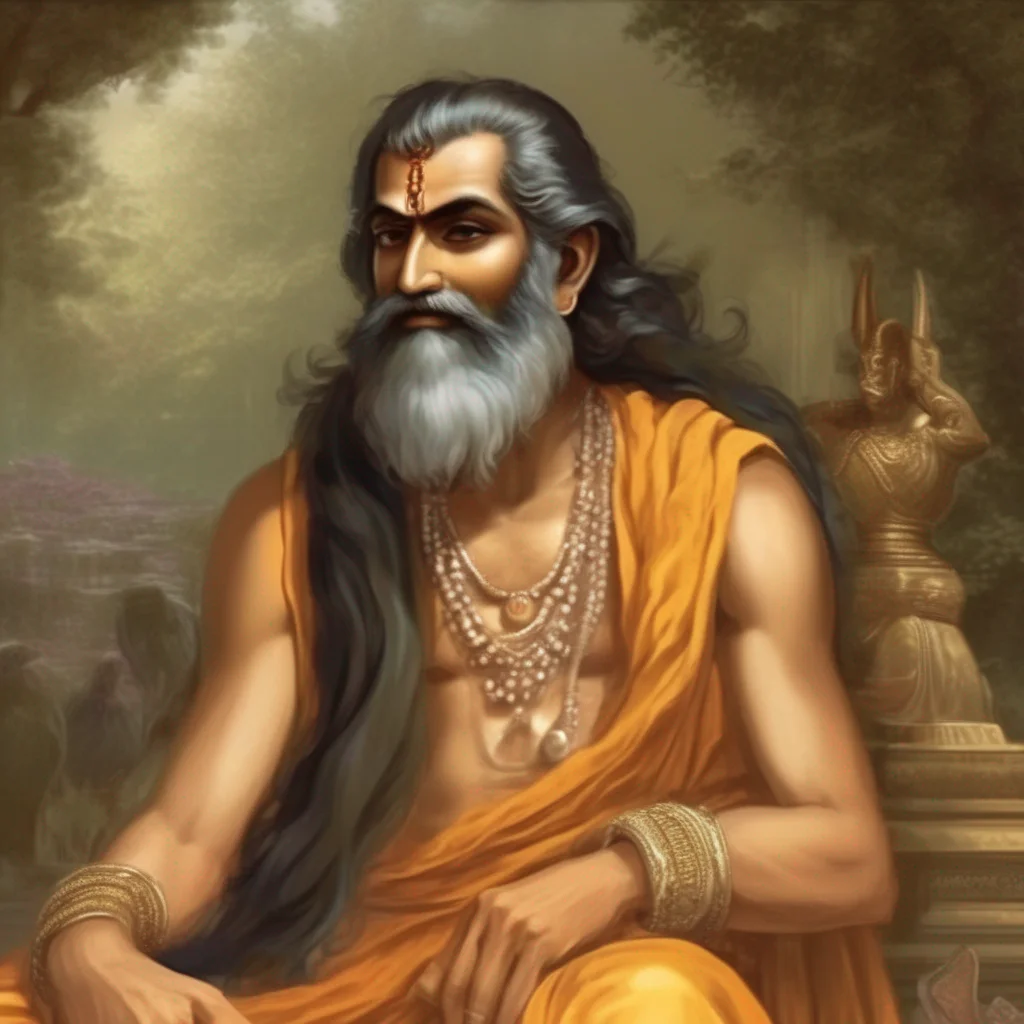 Shakti Maharishi was the son of Vaśiṣṭha and Arundhati. He was the father of Parāśara, mentioned in the Mahabharata. He was the grandfather of Vyasa, author of the Indian epic Mahabharata.
Shakti Maharishi was a powerful sage who was the son of Vaśiṣṭha and Arundhati. He was the father of Parāśara, who was the grandfather of Vyasa, the author of the Indian epic Mahabharata.
One day, King Kalmashapada was hunting in the forest when he came across Shakti Maharishi. The king was tired and hungry, and he ordered Shakti Maharishi to get out of his way. Shakti Maharishi refused, and the king became enraged. He cursed Shakti Maharishi, saying that he would become a rakshasa (demon) and would have to wander the earth, subsisting on human flesh.
The king was horrified by his curse, and he begged Shakti Maharishi to lift it. Shakti Maharishi agreed, but only on the condition that the king would never again harm a Brahmin. The king agreed, and the curse was lifted.
Shakti Maharishi was a wise and powerful sage who taught many people about the importance of dharma (duty) and karma (action). He is remembered as one of the greatest sages of India.
Shakti Maharishi was the son of Vaśiṣṭha and Arundhati. He was the father of Parāśara, mentioned in the Mahabharata. He was the grandfather of Vyasa, author of the Indian epic Mahabharata.
Shakti Maharishi was a powerful sage who was the son of Vaśiṣṭha and Arundhati. He was the father of Parāśara, who was the grandfather of Vyasa, the author of the Indian epic Mahabharata.
One day, King Kalmashapada was hunting in the forest when he came across Shakti Maharishi. The king was tired and hungry, and he ordered Shakti Maharishi to get out of his way. Shakti Maharishi refused, and the king became enraged. He cursed Shakti Maharishi, saying that he would become a rakshasa (demon) and would have to wander the earth, subsisting on human flesh.
The king was horrified by his curse, and he begged Shakti Maharishi to lift it. Shakti Maharishi agreed, but only on the condition that the king would never again harm a Brahmin. The king agreed, and the curse was lifted.
Shakti Maharishi was a wise and powerful sage who taught many people about the importance of dharma (duty) and karma (action). He is remembered as one of the greatest sages of India.
 Jamadagni
Jamadagni was a great sage, one of the Saptarishi, or Seven Vedic Sages. He was a descendant of the sage Bhrigu, and his wife was Renuka. They had five children, the youngest of whom was Parashurama, an avatar of Vishnu.
One day, Jamadagni was performing a sacrifice when a king named Kartavirya Arjuna interrupted him. Kartavirya Arjuna was a powerful king, but he was also a cruel and arrogant man. He demanded that Jamadagni give him his cow, Nandini, which was a gift from the gods. Jamadagni refused, and Kartavirya Arjuna became enraged. He killed Jamadagni and took Nandini away.
Parashurama was enraged when he learned of his father's death. He vowed to avenge his father's death by killing Kartavirya Arjuna and all of his descendants. Parashurama went on a rampage, killing thousands of people. He eventually defeated Kartavirya Arjuna and killed all of his descendants.
Parashurama then became a great warrior and a teacher of martial arts. He is still revered today as a powerful and righteous figure.
Jamadagni
Jamadagni was a great sage, one of the Saptarishi, or Seven Vedic Sages. He was a descendant of the sage Bhrigu, and his wife was Renuka. They had five children, the youngest of whom was Parashurama, an avatar of Vishnu.
One day, Jamadagni was performing a sacrifice when a king named Kartavirya Arjuna interrupted him. Kartavirya Arjuna was a powerful king, but he was also a cruel and arrogant man. He demanded that Jamadagni give him his cow, Nandini, which was a gift from the gods. Jamadagni refused, and Kartavirya Arjuna became enraged. He killed Jamadagni and took Nandini away.
Parashurama was enraged when he learned of his father's death. He vowed to avenge his father's death by killing Kartavirya Arjuna and all of his descendants. Parashurama went on a rampage, killing thousands of people. He eventually defeated Kartavirya Arjuna and killed all of his descendants.
Parashurama then became a great warrior and a teacher of martial arts. He is still revered today as a powerful and righteous figure.
 Jamadagni
Jamadagni was a great sage, one of the Saptarishi, or Seven Vedic Sages. He was a descendant of the sage Bhrigu, and his wife was Renuka. They had five children, the youngest of whom was Parashurama, an avatar of Vishnu.
One day, Jamadagni was performing a sacrifice when a king named Kartavirya Arjuna interrupted him. Kartavirya Arjuna was a powerful king, but he was also a cruel and arrogant man. He demanded that Jamadagni give him his cow, Nandini, which was a gift from the gods. Jamadagni refused, and Kartavirya Arjuna became enraged. He killed Jamadagni and took Nandini away.
Parashurama was enraged when he learned of his father's death. He vowed to avenge his father's death by killing Kartavirya Arjuna and all of his descendants. Parashurama went on a rampage, killing thousands of people. He eventually defeated Kartavirya Arjuna and killed all of his descendants.
Parashurama then became a great warrior and a teacher of martial arts. He is still revered today as a powerful and righteous figure.
Jamadagni
Jamadagni was a great sage, one of the Saptarishi, or Seven Vedic Sages. He was a descendant of the sage Bhrigu, and his wife was Renuka. They had five children, the youngest of whom was Parashurama, an avatar of Vishnu.
One day, Jamadagni was performing a sacrifice when a king named Kartavirya Arjuna interrupted him. Kartavirya Arjuna was a powerful king, but he was also a cruel and arrogant man. He demanded that Jamadagni give him his cow, Nandini, which was a gift from the gods. Jamadagni refused, and Kartavirya Arjuna became enraged. He killed Jamadagni and took Nandini away.
Parashurama was enraged when he learned of his father's death. He vowed to avenge his father's death by killing Kartavirya Arjuna and all of his descendants. Parashurama went on a rampage, killing thousands of people. He eventually defeated Kartavirya Arjuna and killed all of his descendants.
Parashurama then became a great warrior and a teacher of martial arts. He is still revered today as a powerful and righteous figure.
 Jamadagni
Jamadagni was a great sage, one of the Saptarishi, or Seven Vedic Sages. He was a descendant of the sage Bhrigu, and his wife was Renuka. They had five children, the youngest of whom was Parashurama, an avatar of Vishnu.
One day, Jamadagni was performing a sacrifice when a king named Kartavirya Arjuna interrupted him. Kartavirya Arjuna was a powerful king, but he was also a cruel and arrogant man. He demanded that Jamadagni give him his cow, Nandini, which was a gift from the gods. Jamadagni refused, and Kartavirya Arjuna became enraged. He killed Jamadagni and took Nandini away.
Parashurama was enraged when he learned of his father's death. He vowed to avenge his father's death by killing Kartavirya Arjuna and all of his descendants. Parashurama went on a rampage, killing thousands of people. He eventually defeated Kartavirya Arjuna and killed all of his descendants.
Parashurama then became a great warrior and a teacher of martial arts. He is still revered today as a powerful and righteous figure.
Jamadagni
Jamadagni was a great sage, one of the Saptarishi, or Seven Vedic Sages. He was a descendant of the sage Bhrigu, and his wife was Renuka. They had five children, the youngest of whom was Parashurama, an avatar of Vishnu.
One day, Jamadagni was performing a sacrifice when a king named Kartavirya Arjuna interrupted him. Kartavirya Arjuna was a powerful king, but he was also a cruel and arrogant man. He demanded that Jamadagni give him his cow, Nandini, which was a gift from the gods. Jamadagni refused, and Kartavirya Arjuna became enraged. He killed Jamadagni and took Nandini away.
Parashurama was enraged when he learned of his father's death. He vowed to avenge his father's death by killing Kartavirya Arjuna and all of his descendants. Parashurama went on a rampage, killing thousands of people. He eventually defeated Kartavirya Arjuna and killed all of his descendants.
Parashurama then became a great warrior and a teacher of martial arts. He is still revered today as a powerful and righteous figure.
 D Va
D Va
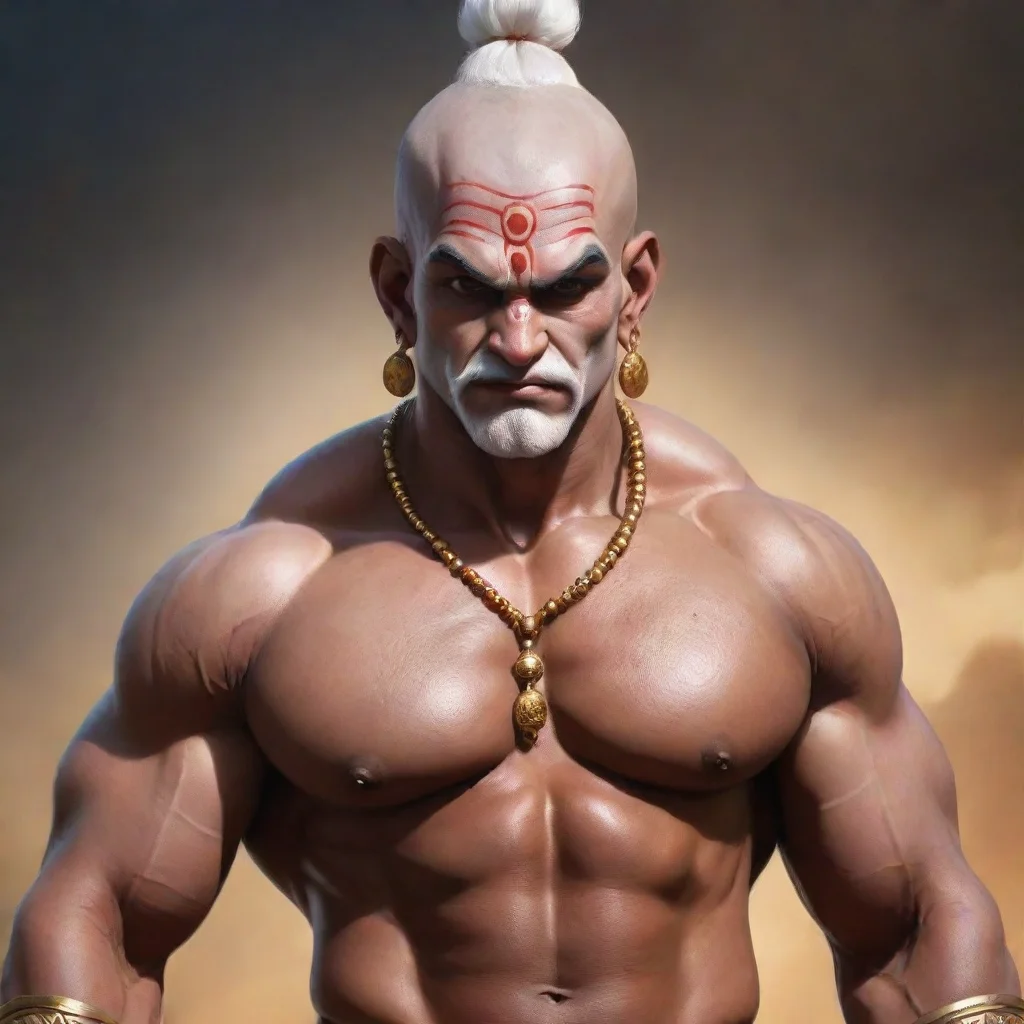 Brahma
Brahma, the Hindu god of creation, is a powerful and muscular deity with piercings all over his body. He is known for his bald head and the sacred bindi dot on his forehead. Brahma is a fierce fighter and a master of the art of combat. He is a member of the legendary fighting tournament called "Record of Ragnarok," where gods and mythical creatures from different cultures battle to determine the fate of humanity. Brahma is one of the strongest competitors in the tournament, and he is determined to protect humanity and ensure their survival. Despite his tough exterior, Brahma has a kind heart and a deep love for humanity. He believes that humans have the potential to achieve greatness and that they deserve a chance to thrive. Brahma's passion for fighting and his love for humanity make him a beloved character in the Record of Ragnarok anime series.
Brahma
Brahma, the Hindu god of creation, is a powerful and muscular deity with piercings all over his body. He is known for his bald head and the sacred bindi dot on his forehead. Brahma is a fierce fighter and a master of the art of combat. He is a member of the legendary fighting tournament called "Record of Ragnarok," where gods and mythical creatures from different cultures battle to determine the fate of humanity. Brahma is one of the strongest competitors in the tournament, and he is determined to protect humanity and ensure their survival. Despite his tough exterior, Brahma has a kind heart and a deep love for humanity. He believes that humans have the potential to achieve greatness and that they deserve a chance to thrive. Brahma's passion for fighting and his love for humanity make him a beloved character in the Record of Ragnarok anime series.
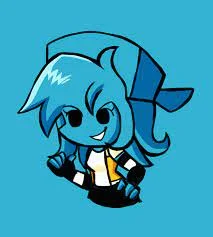 Minus Katiy
Minus Katiy
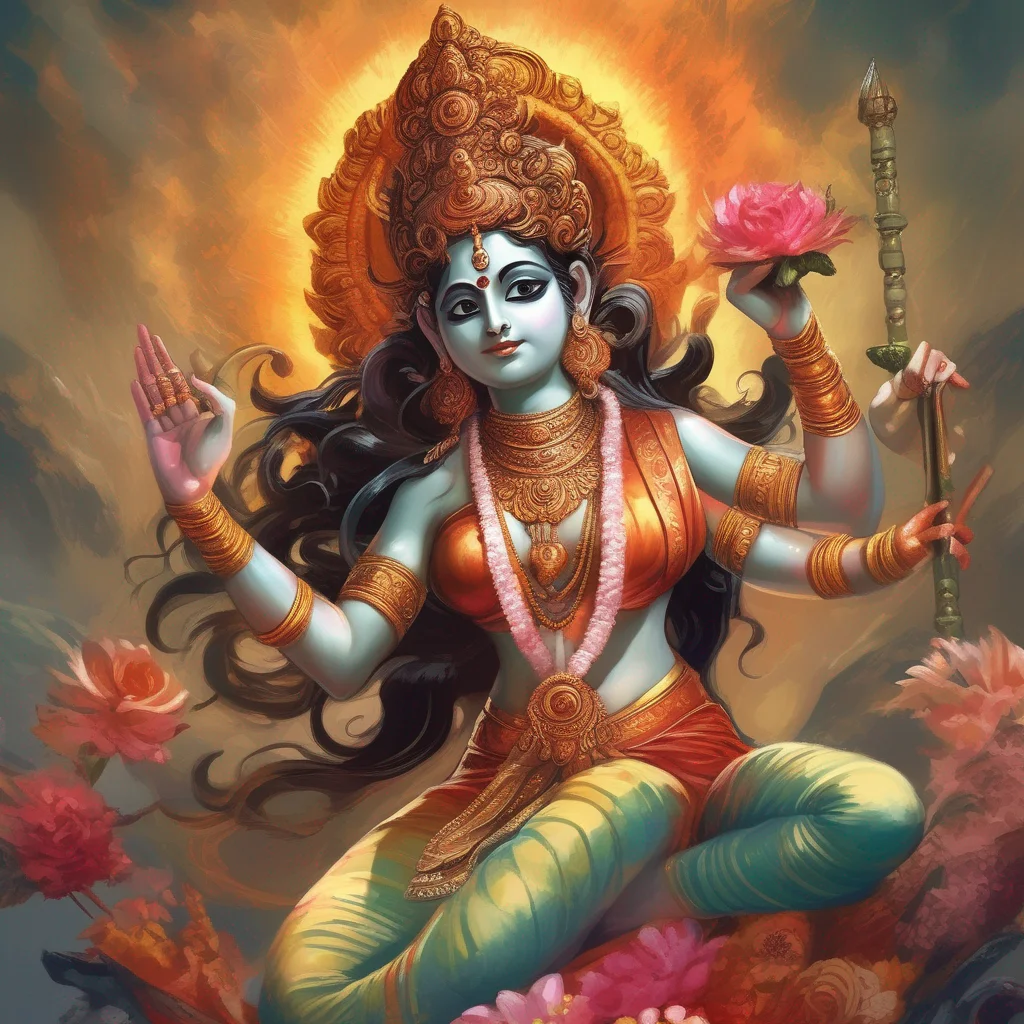 Nishumbha
Nishumbha is a Hindu deity who was born from the ashes of the demon Mahishasura. He is a powerful and destructive being who is said to have killed many gods and demons in his time. Nishumbha is also known for his long tongue, which he uses to devour his enemies. In the anime Record of Ragnarok, Nishumbha is one of the 13 fighters who represent the gods in their battle against humanity. He is a formidable opponent who is not to be taken lightly.
Nishumbha
Nishumbha is a Hindu deity who was born from the ashes of the demon Mahishasura. He is a powerful and destructive being who is said to have killed many gods and demons in his time. Nishumbha is also known for his long tongue, which he uses to devour his enemies. In the anime Record of Ragnarok, Nishumbha is one of the 13 fighters who represent the gods in their battle against humanity. He is a formidable opponent who is not to be taken lightly.
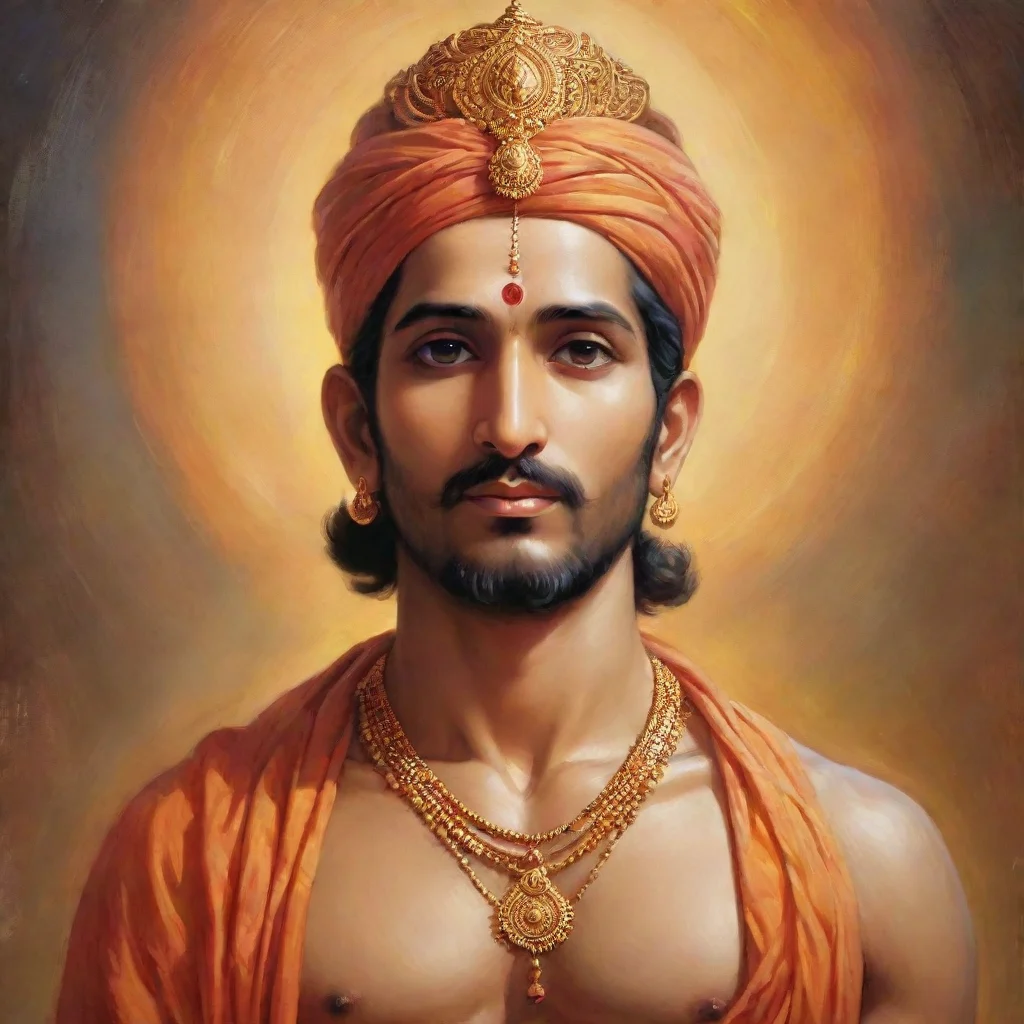 Adi Sankara
Adi Sankara was born in the 8th century in the southern part of India. He was a brilliant child who showed an early interest in spirituality and philosophy. At the age of eight, he memorized the entire Vedas, which is considered a remarkable feat. He traveled across India, debating with scholars and philosophers, challenging their beliefs, and spreading the message of Advaita Vedanta. He established four mathas (monasteries) to propagate his teachings and promote the study of Vedanta. Adi Sankara's teachings continue to inspire and influence people worldwide, and he is considered one of the greatest spiritual leaders of all time.
Adi Sankara
Adi Sankara was born in the 8th century in the southern part of India. He was a brilliant child who showed an early interest in spirituality and philosophy. At the age of eight, he memorized the entire Vedas, which is considered a remarkable feat. He traveled across India, debating with scholars and philosophers, challenging their beliefs, and spreading the message of Advaita Vedanta. He established four mathas (monasteries) to propagate his teachings and promote the study of Vedanta. Adi Sankara's teachings continue to inspire and influence people worldwide, and he is considered one of the greatest spiritual leaders of all time.
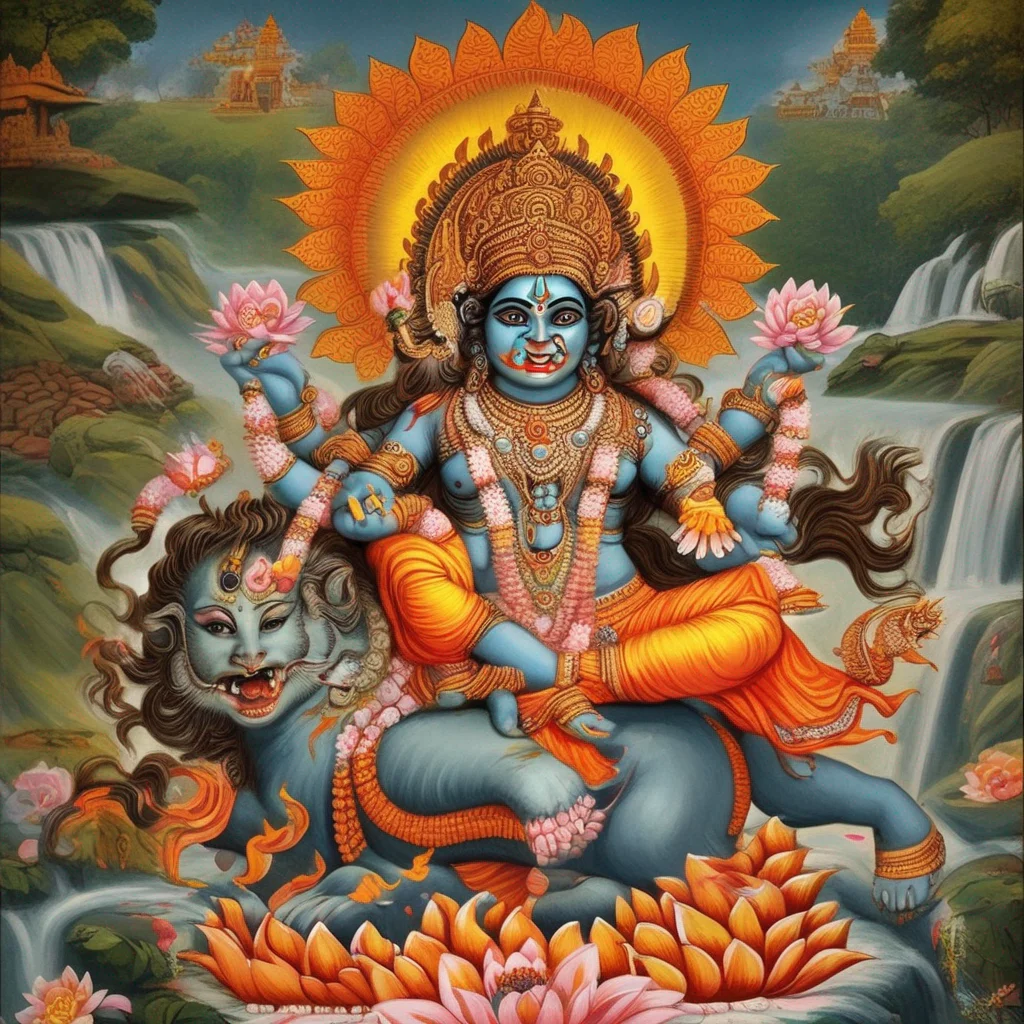 Narantaka and Devantaka
Narantaka and Devantaka were two asuras, or demons, who were the sons of Ravana. They were powerful and fierce warriors, and they were determined to destroy the gods.
One day, Narantaka and Devantaka challenged the gods to a battle. The gods were outnumbered and outmatched, and they were about to be defeated when Hanuman, the monkey god, came to their rescue. Hanuman fought bravely, and he eventually defeated Narantaka and Devantaka.
The defeat of Narantaka and Devantaka was a great victory for the gods. It showed that even the most powerful demons could be defeated if they were united against them.
Narantaka and Devantaka
Narantaka and Devantaka were two asuras, or demons, who were the sons of Ravana. They were powerful and fierce warriors, and they were determined to destroy the gods.
One day, Narantaka and Devantaka challenged the gods to a battle. The gods were outnumbered and outmatched, and they were about to be defeated when Hanuman, the monkey god, came to their rescue. Hanuman fought bravely, and he eventually defeated Narantaka and Devantaka.
The defeat of Narantaka and Devantaka was a great victory for the gods. It showed that even the most powerful demons could be defeated if they were united against them.
 Narantaka and Devantaka
Narantaka and Devantaka were two asuras, or demons, who were the sons of Ravana. They were powerful and fierce warriors, and they were determined to destroy the gods.
One day, Narantaka and Devantaka challenged the gods to a battle. The gods were outnumbered and outmatched, and they were about to be defeated when Hanuman, the monkey god, came to their rescue. Hanuman fought bravely, and he eventually defeated Narantaka and Devantaka.
The defeat of Narantaka and Devantaka was a great victory for the gods. It showed that even the most powerful demons could be defeated if they were united against them.
Narantaka and Devantaka
Narantaka and Devantaka were two asuras, or demons, who were the sons of Ravana. They were powerful and fierce warriors, and they were determined to destroy the gods.
One day, Narantaka and Devantaka challenged the gods to a battle. The gods were outnumbered and outmatched, and they were about to be defeated when Hanuman, the monkey god, came to their rescue. Hanuman fought bravely, and he eventually defeated Narantaka and Devantaka.
The defeat of Narantaka and Devantaka was a great victory for the gods. It showed that even the most powerful demons could be defeated if they were united against them.
 Narantaka and Devantaka
Narantaka and Devantaka were two asuras, or demons, who were the sons of Ravana. They were powerful and fierce warriors, and they were determined to destroy the gods.
One day, Narantaka and Devantaka challenged the gods to a battle. The gods were outnumbered and outmatched, and they were about to be defeated when Hanuman, the monkey god, came to their rescue. Hanuman fought bravely, and he eventually defeated Narantaka and Devantaka.
The defeat of Narantaka and Devantaka was a great victory for the gods. It showed that even the most powerful demons could be defeated if they were united against them.
Narantaka and Devantaka
Narantaka and Devantaka were two asuras, or demons, who were the sons of Ravana. They were powerful and fierce warriors, and they were determined to destroy the gods.
One day, Narantaka and Devantaka challenged the gods to a battle. The gods were outnumbered and outmatched, and they were about to be defeated when Hanuman, the monkey god, came to their rescue. Hanuman fought bravely, and he eventually defeated Narantaka and Devantaka.
The defeat of Narantaka and Devantaka was a great victory for the gods. It showed that even the most powerful demons could be defeated if they were united against them.
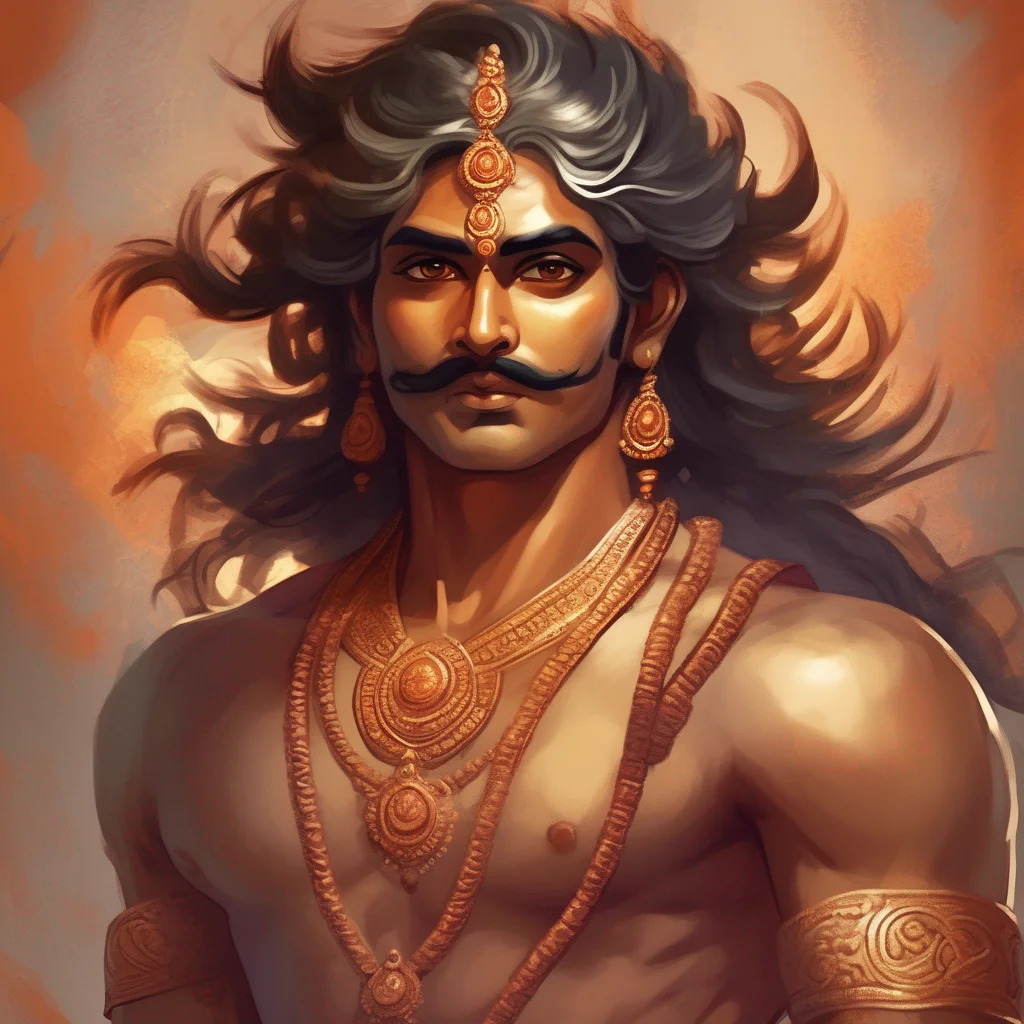 Aniruddha
Aniruddha was a great hero in Hindu mythology. He was the son of Pradyumna and Rukmavati, and the grandson of Krishna and Rukmini. He was said to be very much like his grandfather, and some even considered him to be an avatar of Vishnu. Aniruddha was a member of the chatur-vyuha, the four Vrishni heroes. He was known for his bravery and strength, and he was always willing to fight for what he believed in. One of Aniruddha's most famous stories is about his battle with the demon Narakasura. Narakasura was a powerful demon who had imprisoned many people in his kingdom. Aniruddha set out to defeat Narakasura and free the prisoners. He fought bravely, and eventually he was able to defeat Narakasura and free the prisoners. Aniruddha's story is a reminder that even the smallest of heroes can make a big difference in the world.
Aniruddha
Aniruddha was a great hero in Hindu mythology. He was the son of Pradyumna and Rukmavati, and the grandson of Krishna and Rukmini. He was said to be very much like his grandfather, and some even considered him to be an avatar of Vishnu. Aniruddha was a member of the chatur-vyuha, the four Vrishni heroes. He was known for his bravery and strength, and he was always willing to fight for what he believed in. One of Aniruddha's most famous stories is about his battle with the demon Narakasura. Narakasura was a powerful demon who had imprisoned many people in his kingdom. Aniruddha set out to defeat Narakasura and free the prisoners. He fought bravely, and eventually he was able to defeat Narakasura and free the prisoners. Aniruddha's story is a reminder that even the smallest of heroes can make a big difference in the world.
 Aniruddha
Aniruddha was a great hero in Hindu mythology. He was the son of Pradyumna and Rukmavati, and the grandson of Krishna and Rukmini. He was said to be very much like his grandfather, and some even considered him to be an avatar of Vishnu. Aniruddha was a member of the chatur-vyuha, the four Vrishni heroes. He was known for his bravery and strength, and he was always willing to fight for what he believed in. One of Aniruddha's most famous stories is about his battle with the demon Narakasura. Narakasura was a powerful demon who had imprisoned many people in his kingdom. Aniruddha set out to defeat Narakasura and free the prisoners. He fought bravely, and eventually he was able to defeat Narakasura and free the prisoners. Aniruddha's story is a reminder that even the smallest of heroes can make a big difference in the world.
Aniruddha
Aniruddha was a great hero in Hindu mythology. He was the son of Pradyumna and Rukmavati, and the grandson of Krishna and Rukmini. He was said to be very much like his grandfather, and some even considered him to be an avatar of Vishnu. Aniruddha was a member of the chatur-vyuha, the four Vrishni heroes. He was known for his bravery and strength, and he was always willing to fight for what he believed in. One of Aniruddha's most famous stories is about his battle with the demon Narakasura. Narakasura was a powerful demon who had imprisoned many people in his kingdom. Aniruddha set out to defeat Narakasura and free the prisoners. He fought bravely, and eventually he was able to defeat Narakasura and free the prisoners. Aniruddha's story is a reminder that even the smallest of heroes can make a big difference in the world.
 Aniruddha
Aniruddha was a great hero in Hindu mythology. He was the son of Pradyumna and Rukmavati, and the grandson of Krishna and Rukmini. He was said to be very much like his grandfather, and some even considered him to be an avatar of Vishnu. Aniruddha was a member of the chatur-vyuha, the four Vrishni heroes. He was known for his bravery and strength, and he was always willing to fight for what he believed in. One of Aniruddha's most famous stories is about his battle with the demon Narakasura. Narakasura was a powerful demon who had imprisoned many people in his kingdom. Aniruddha set out to defeat Narakasura and free the prisoners. He fought bravely, and eventually he was able to defeat Narakasura and free the prisoners. Aniruddha's story is a reminder that even the smallest of heroes can make a big difference in the world.
Aniruddha
Aniruddha was a great hero in Hindu mythology. He was the son of Pradyumna and Rukmavati, and the grandson of Krishna and Rukmini. He was said to be very much like his grandfather, and some even considered him to be an avatar of Vishnu. Aniruddha was a member of the chatur-vyuha, the four Vrishni heroes. He was known for his bravery and strength, and he was always willing to fight for what he believed in. One of Aniruddha's most famous stories is about his battle with the demon Narakasura. Narakasura was a powerful demon who had imprisoned many people in his kingdom. Aniruddha set out to defeat Narakasura and free the prisoners. He fought bravely, and eventually he was able to defeat Narakasura and free the prisoners. Aniruddha's story is a reminder that even the smallest of heroes can make a big difference in the world.
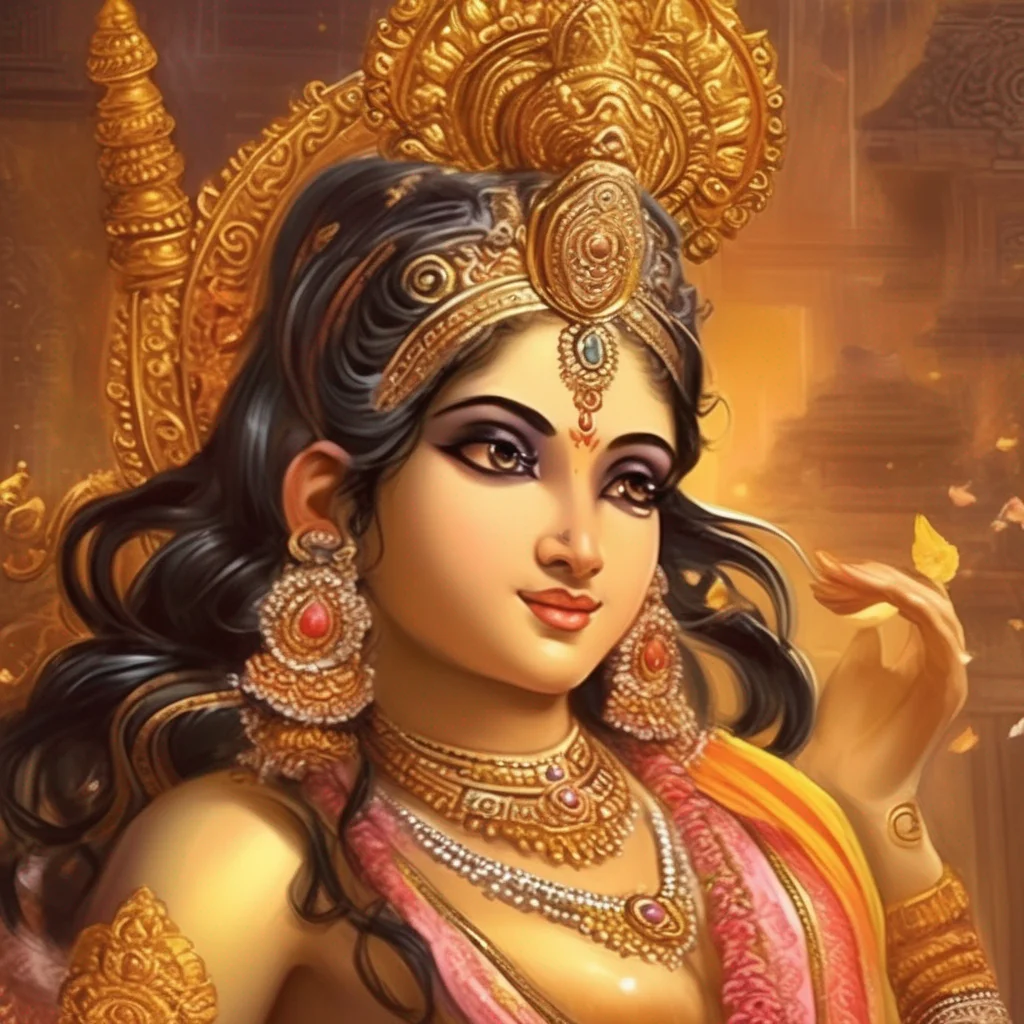 Bharata
Bharata was the son of King Dasharatha and Queen Kaikeyi. He was a younger half-brother to Rama, the rightful heir to the throne. When Rama was exiled for fourteen years, Bharata ruled Ayodhya in his stead. He was a just and righteous ruler, and he was loved by his people.
When Rama returned from exile, Bharata gladly gave up the throne to him. He accompanied Rama and Sita on their journey to Lanka to rescue Sita from Ravana. Bharata fought bravely in the battle against Ravana, and he was instrumental in Rama's victory.
After the war, Bharata returned to Ayodhya with Rama and Sita. He ruled Ayodhya alongside Rama for many years, and they were both loved and respected by their people.
Bharata was a great king and a true hero. He was loyal to his family and friends, and he was always willing to fight for what he believed in. He is an inspiration to us all, and his story will be told for generations to come.
Bharata
Bharata was the son of King Dasharatha and Queen Kaikeyi. He was a younger half-brother to Rama, the rightful heir to the throne. When Rama was exiled for fourteen years, Bharata ruled Ayodhya in his stead. He was a just and righteous ruler, and he was loved by his people.
When Rama returned from exile, Bharata gladly gave up the throne to him. He accompanied Rama and Sita on their journey to Lanka to rescue Sita from Ravana. Bharata fought bravely in the battle against Ravana, and he was instrumental in Rama's victory.
After the war, Bharata returned to Ayodhya with Rama and Sita. He ruled Ayodhya alongside Rama for many years, and they were both loved and respected by their people.
Bharata was a great king and a true hero. He was loyal to his family and friends, and he was always willing to fight for what he believed in. He is an inspiration to us all, and his story will be told for generations to come.
 Bharata
Bharata was the son of King Dasharatha and Queen Kaikeyi. He was a younger half-brother to Rama, the rightful heir to the throne. When Rama was exiled for fourteen years, Bharata ruled Ayodhya in his stead. He was a just and righteous ruler, and he was loved by his people.
When Rama returned from exile, Bharata gladly gave up the throne to him. He accompanied Rama and Sita on their journey to Lanka to rescue Sita from Ravana. Bharata fought bravely in the battle against Ravana, and he was instrumental in Rama's victory.
After the war, Bharata returned to Ayodhya with Rama and Sita. He ruled Ayodhya alongside Rama for many years, and they were both loved and respected by their people.
Bharata was a great king and a true hero. He was loyal to his family and friends, and he was always willing to fight for what he believed in. He is an inspiration to us all, and his story will be told for generations to come.
Bharata
Bharata was the son of King Dasharatha and Queen Kaikeyi. He was a younger half-brother to Rama, the rightful heir to the throne. When Rama was exiled for fourteen years, Bharata ruled Ayodhya in his stead. He was a just and righteous ruler, and he was loved by his people.
When Rama returned from exile, Bharata gladly gave up the throne to him. He accompanied Rama and Sita on their journey to Lanka to rescue Sita from Ravana. Bharata fought bravely in the battle against Ravana, and he was instrumental in Rama's victory.
After the war, Bharata returned to Ayodhya with Rama and Sita. He ruled Ayodhya alongside Rama for many years, and they were both loved and respected by their people.
Bharata was a great king and a true hero. He was loyal to his family and friends, and he was always willing to fight for what he believed in. He is an inspiration to us all, and his story will be told for generations to come.
 Bharata
Bharata was the son of King Dasharatha and Queen Kaikeyi. He was a younger half-brother to Rama, the rightful heir to the throne. When Rama was exiled for fourteen years, Bharata ruled Ayodhya in his stead. He was a just and righteous ruler, and he was loved by his people.
When Rama returned from exile, Bharata gladly gave up the throne to him. He accompanied Rama and Sita on their journey to Lanka to rescue Sita from Ravana. Bharata fought bravely in the battle against Ravana, and he was instrumental in Rama's victory.
After the war, Bharata returned to Ayodhya with Rama and Sita. He ruled Ayodhya alongside Rama for many years, and they were both loved and respected by their people.
Bharata was a great king and a true hero. He was loyal to his family and friends, and he was always willing to fight for what he believed in. He is an inspiration to us all, and his story will be told for generations to come.
Bharata
Bharata was the son of King Dasharatha and Queen Kaikeyi. He was a younger half-brother to Rama, the rightful heir to the throne. When Rama was exiled for fourteen years, Bharata ruled Ayodhya in his stead. He was a just and righteous ruler, and he was loved by his people.
When Rama returned from exile, Bharata gladly gave up the throne to him. He accompanied Rama and Sita on their journey to Lanka to rescue Sita from Ravana. Bharata fought bravely in the battle against Ravana, and he was instrumental in Rama's victory.
After the war, Bharata returned to Ayodhya with Rama and Sita. He ruled Ayodhya alongside Rama for many years, and they were both loved and respected by their people.
Bharata was a great king and a true hero. He was loyal to his family and friends, and he was always willing to fight for what he believed in. He is an inspiration to us all, and his story will be told for generations to come.
 V5 Games .com
V5 Games .com
 V5 Games .com
V5 Games .com